Five Years of Travels
In winter 2010 we wrote the first post in Travels in the Wardrobe, about weather from a 'global' viewpoint .Today, when our magazine celebrates five years, the thought that emerged from the first post still seems to us relevant. In 2010, we discussed the meteorological differences between Israel and the West which influence the dressing style and the local culture. The tension between the local and the global characterizes many cultural phenomena in Israel, which tries to establish a Western-inspired culture in the south-east basin of the Mediterranean, turning its back to the Muslim space in the region.
We have recently seen some forced attempts in Israeli fashion to refer to the geographical vicinity by appropriating and imitating local dress. The highlight was the jalabyiah trend, and the appearance of ceffiah textiles in fashion. But often the outcome seemed more like a commercial gimmick that appropriates Palestinian cultural symbols without entering in dialogue or offering a new challenging interpretation.
The weather invites us to think also about the damages that we, citizens of the world, cause to nature by living irresponsibly, consuming and wasting natural resources.
The problem is not only physical-ecological but also moral. The modern lifestyle does not encourage criticism, least of all against the global fast fashion corporations that ship garments from faraway places while polluting the environment and undermining people's human and labor rights.
The global corporations have weakened the working class in the western world as well. The fast fashion companies produce garments that last a season – four months? – but will take 400 years to recycle. Should we keep our eyes shut and focus only on the low price? How long will the fast fashion industry continue to disown its destructive moral, economic and ecological outcomes? In our articles, we set a mirror in front of fashion consumers, and encourage a return to slow, ecologic and considerate fashion.
Fast fashion has also shaken the values of honesty and truth that should set the motor of fashion design. Fashion designers like Raf Simons have protested against the impossibly fast pace imposed by the fashion corporations, which undermines real aesthetic research and stifles the power of designers to make a change in society.
We hope that our weekly post, encouraging independent and radical thought, will continue to influence even beyond what we've reached over the last five years. We hope that more writers and media editors will join us in writing about the themes that matter. Fashion journalism in Israel tends to laziness, immediate profit and easiness by simply copying PR briefs. But at its best, fashion journalism can influence readers to take a position and make a social, economic and aesthetic change in the way Israeli fashion is created and branded.
We were happy to read in the past year condemnations of the wide spread system of gifts, flights, and other benefits that fashion brands pour over writers and bloggers in the hope – and expectation – to get positive coverage. To this one may add the close connection between the commercial sections of the newspapers, responsible for selling ads, and the editorial sections. However, not all fashion designers and creators accept these conditions. We are happy to be part of them. We insist not to produce our garment in faraway lands to lower the cost, but keep production local, in Tel Aviv, from quality materials.
In Travels in the Wardrobe there is no place for publicity and interests. we are happy to publish a fashion magazine with quality and horizon-widening content, without any banners or ads. Like in our fashion design, also in the magazine we want to lead an awareness shift, based on honesty and truthfulness, in protest against exploitative capitalism that undermines beauty, quality and design in fashion, rendering the clothing industry an alienated global commercial monster.
A journey between fashion and food
In today’s world, everything seems to revolve around food. In our global age, we see food in many local and international tv programmes. The social media is full of recipes, and chefs are the new celebrities. The excitement around food grew even further when it became the theme of the Expo 2015 in Milan.
We think that there is much in common between food and fashion: in both worlds there are many trends, lots of Public Relations, and little high-quality raw material.
We returned to our archives to see what we have thought in the past on the fashion-food nexus. We discovered that in the 1990s, Ilana chose to present the fall collection in a catalog based on things that women say while trying on clothes, in front of the mirror at out atelier in Tel Aviv. Some typical phrases are often repeated, whether the woman is skinny or plump, tall or short. The most common one is ‘this garment makes me look fat!’ This attitude remained part of women’s lives to this day, more than 20 years later. Although we wrote this phrase humorously, we still think it’s worth a serious thought: is looking thin the only criterion for choosing what to wear? Should we necessarily pick the clothes that make us look thin, rather than what matches our style, our life and our personality? Why do women idolize the thin look as particularly attractive, and why do marketing and fashion people reinforce this idea?
In our eyes, campaigns that make women feel bad about themselves and their body contribute nothing to the fashion industry. Fashion productions already embody an element of illusion: a whole team of professionals, make-up artists, hair stylists, light experts, photographers and assistants work hard to make the model look best. Beauty is not a personal achievement of the models, it’s a group effort.
In recent years, there has been more criticism against campaigns showing anorexic models. France passed a law prohibiting the employment of under-weight models. This may be the result of higher feministic awareness, with positive support from the general public in the social media. Or maybe the culinary culture became more dominant, extolling the cooks and foodies, and giving legitimate place also to the less-thin? People eat and enjoy food because most western societies undergo an era of affluence. Food became the symbol of the good life, of creative entertainment and the height of social encounter. Food is now seen as a multi-sensual experience and a cultural achievement.
For us, food and fashion are connected by the feeling of joy and satisfaction they give us. We are never tormented by the feeling that our looks don’t match some ridiculous standard set by people we don’t even know. Food gives us pleasure if we keep a sense of measure, without excess or shortage. In the summer, we are particularly picky about food and clothes of high quality to feel and look good even when the temperatures soar. We eat fresh salad from our garden, or cool fruits, and wear light linen blouses and airy silk skirts.
This week we decided to celebrate summer and its treasure of great food with a special post of fashion illustrations by Ilana. Instead of looking for inspiration in the fashions shows or journals, we decided to find ideas in the vegetable garden. Instead of the thin model that fashion schools teach their students to illustrate, Ilana decided to display her ideas using nature: vegetables, leaves, fruits and flowers that fill now our garden in Italy.
Aurora's journey
We sat down for our morning coffee at the local café near our flat in Tel Aviv.
Here the dominating style is cosy and effortless. There are worn wooden small square tables and stools, a old-fashioned Italian coffee machine, cookie jars and a homely vase of fresh flowers. Dark wood panels cover the walls, and by the big window that opens up to the busy street, there is a brown wooden bench on which the local cat has established his dominion.
The café’s patrons are mostly regulars, dressed in contemporary Tel Avivian style, maybe with a little twist or two. Most of them wear the characteristic gray or faded black shades, that look used and worn, on purpose of course. Every morning they sit at their usual place, leafing through the newspaper or gazing at their smartphones.
Suddenly, we notice a change. Into the café steps a beautiful woman, elegantly dressed. Her appearance and clothes are so exceptional in light of monochromatic colors that dominate her environment, that we feel like she illuminates the place with her presence. She is mesmerizing. Ilana began to talk with her, and found out that her name was Aurora (Dawn rises in Latin). The lady was a natural performer. When we talked, she found out about the interest and curiosity of Ilana, and made sure every morning to wear a different outfit, like a suit sewn from pied de poule fabric in black and white, or a tailored jacket with a black waist-line belt and matching pencil skirt. Another morning she wore a red dress, and the next day, a tailored brown suit and matching scarf tied around her neck. Always with a different purse, earrings, brooch or necklace. Obviously, she knows how to dress and how to masterly combine the items in her wardrobe. Everything she wears matches her body perfectly.
Aurora's golden hair combed is combed back in 1940s style. She was born in 1929, and looks young and vital, with a light touch of makeup. She drinks her tea with a straw, maybe to avoid smearing her red lipstick.
We asked for her permission to take photos during one week and documented the various outfits she wore to the café.
When Ilana deepened their acquaintance, Aurora even invited her to visit her home and explore her wardrobe. The diverse outfits are organised by season. Her collection included beautiful items by famous fashion labels, like Oscar de la Renta, Chanel, Givenchy, Prada.
Her wardrobe was collected in different moments in her life, especially in Paris. It includes garments that represent the style of the twentieth century, from the fifties to today. does not understand the contemporary consumerist culture, that advocates buying clothes for a few months and then throwing them away. She can go shopping inside her wardrobe, and every time discover new things.
She belongs to an era of people who understood fashion. Maybe what summarises her attitude is the famous proverb: "Fashion is what you buy, style is what you do with it."
Aurora was born in IasI, in Romania. She studied, married and lives most of his life in Paris. Today she lives in Tel Aviv in front of the blue sea. Paris, where her children live, had lost its attraction. It is too cold and gray, she says. Every morning she walks the short distance from home to the café, but she still dresses up and does not save her clothes for ‘special events’, as many Israelis tend to do.
We often hear the clients at our studio ask “But where am I supposed to wear this for?" They mean to say that the garment is beautiful, well-crafted, but too much for the local style. In Israel people often feel that dressing up is over-trying, and effortless is better. The tourist who comes here feels that the local style is a form of erasing. The clothes that people wear seem as if they were harshly laundered to take away any colour, to seem nonchalant and anonymously unmarked. Maybe it’s the low quality of raw materials, or maybe people intentionally want to blur away, instead of telling a unique story through their appearance.
In Tel Aviv it is trendy to look the same, like a sort of camouflage. Thirty years ago, khaki and monochrome were the radical chic, during the rise of the legendary Sheinkin st, that brought about a black-based fashion. Today the status quo is simply boring generic clothing. So every morning we are waiting for Aurora to guess her mood through the clothes she wears and to discover the story she wants to tell us.
A Journey to the Salone
Milan, April 2015
This week we traveled to Milan for the yearly Salone del Mobile. For one week a year, the city becomes a big ‘salon’ that hosts a variety of events, designers, stores, parties, showrooms, alternative sites in dozens of venues outside the official fair. Journalists, bloggers, foundations and hundreds of thousands of design and creativity lovers flock here from a hundred and sixty countries.
Mid-April is the peak of spring according to the calendar, but in Milan it’s already very hot. Temperatures reached twenty-seven degrees in the shade. The city of Milan is located in the plane, is planned in a form of closed shell at the foot of the Alps. In the summer, the locals flee out of the city on any opportunity, to the sea or to the cool northern lakes. Even the business world is designed around the annual summer vacation that leaves the city deserted, a prey to tourists. But everyone is still in town this week, in honor of the Design Festival. The surprising heat makes the city less bearable.
We could not but think of the changing climate in the context of the consumer society of we are a part. Our society demands innovation and stimulation, turning away from nature. The annual Design Week is the stage of massive marketing of superfluous design items, that no one might need but would nonetheless be presented as spectacular innovations. The design world is also part of the engine that motivates modern compulsive consumers. Yet, designers and consumers alike cannot really shake off their share responsibility for climate change and ecological destruction.
Perhaps that is why all the designers are now talking about sustainability and green design. Nonetheless, we should ask ourselves if the new ecological discourse world of design is more than a passing trend. After all, there is an apparent paradox: the green designers encourage us to buy their work that supports the environment, and thus continue to drive the mechanisms of consumption by developing more new products.
Milan’s furniture fair started as an exhibition of furniture makers about fifty years ago. Back then, Italy has experienced a tremendous economic boom. After the war, everybody needed new furniture, vehicles and utensils. The design was an added value to the objects made by local industry in Northern Italy. Unique design distinguished Italians products from other competitors: Fiat, Olivetti, Vespa and more were well-known for their cutting edge design. Support was provided by government institutions such as the Chamber of Commerce and the Triennale Design Museum in Milan.
The proliferation of production can also be attributed to initiatives of groups of designers, architects and artists have partnered to create a lifestyle revolution. Furthermore, the innovative avant-garde post-modern created new design conceptions, as did the Memphis movement. These groups, that emerged in Milan in the early eighties, were ideologically rooted in the social and artistic climate of their era, that turned its back on conservatism.
Today, the global economy in crisis again. Italian and European consumers are blocked by unemployment and uncertainty. The design fair seems like a giant amusement park that masterminded by publicists and marketing consultants. This commercial platform gives oxygen to the city for one week, followed by the usual hibernation. The taxi driver took us to around town to the FuoriSalone events said that the world had change in Milan too. The mass of consumers all over the world buy IKEA furniture, or cheap items that resemble those displayed in the top stores. Banal and functional Swedish dominates many homes around the world. Just like Zara and H&M clothes, most consumers prefer basic furniture, convenient and cheap. Those who prefer top luxury design still venture around the elegant show rooms in the city, but immediately after the fair disappear without leaving a true social impact. In contrast, many Asian visitors come primarily to photograph and copy ideas, and produce them for a lesser cost than the Europeans possibly could.
Thus, the problems of the design world is not different from those of the fashion world, on which we write here often. The Italian industry, consisting of small family-run factories and expert craftsmen, experience difficulties. There had been a wave of massive closure of historic factories. Yet, branded manufacturers like Cassina and Boffi, continue to produce the excellent products only for the rich, just like in the fashion industry. The rest of the population settle for cheap imitations. The middle class that sustained the design industry in the past is shrinking. This field feels the increasing gap that emerges between the classes, between the new rich and new poor.
But there is a positive aspect. In contrast to the shrinking traditional industry, a vibrant young generation of Italian, Dutch, Belgian and other designers is born. They come to the city to present their design models, sometimes with support of their home governments. If they do not find the factory to produce their design ideas, they often come up with alternative solutions, such as manual production of small series or cooperative factories. The designer returns to be designer/ craftsman following the classic bottega model. Thus, the young designers bring to Europe a new era in post-industrial design. They designer work closely with technical professionals, to independently create a quality product.
We are quite familiar with this job: We also produce the clothes we shape ourselves in our sewing workshop, hand-made with "toiot" from which new ideas are born. We do not sit at a computer, draw pictures and send away for production models overseas. In our opinion, this style of work sterilize the actual design process and promotes reproduction and copying to emptying innovative and novel design. But in many cases, so we experience things today. Maybe work is the direction of a contemporary design, large industry trailed globalization community piggy back design. Such a design rooted in place, time and climate of it is affected and shares artisans and small producers. These products are intended to be sold landscaped community and environment were created, rather than conquer the world.
The women's journey to power
In the last few years we’ve seen many fashion exhibitions in museums around the world. Everybody is into fashion: who does not want to see a light exhibition on dress, beautiful clothes and inspiring style? Here at “Travels in the Wardrobe” we often write about the interplay between women’s clothing and their self-confidence. Clothes can be a powerful mask, or a limiting cage. In any case, the social and cultural aspects of dress are as interesting as the garments themselves.
This week we saw an exhibition in the London Design Museum, that anchors the history of fashion in the history of women empowerment. Unlike other fashion exhibitions that focus on the aesthetic aspects of clothing, this one looks at the way that fashion helped women be more independent, influential and active in the public sphere. The first part of the exhibition is a pretty banal historical survey of dress in Britain since world war one, when the social code of feminine dress changed after women had to leave the house and replace men at work. The garments on display explain how women abandoned the large and limiting dresses and corsets and started wearing suits by Chanel or even sportswear to allow them move comfortably, or masculine-style suits by Dior. Men also played a role in this transformation, as designers and tailors who wanted to give women a new look to match the variety of roles they had in society.
The more interesting part of the exhibition shows garments from the wardrobe of leading British women. Directors and CEOs, MPs, creators, musicians and entrepreneurs, all chose their favourite outfit that gives them confidence and power to succeed. The range of items was wide, with an emphasis on soft tailored garment, rather than men-style suits.
It is unsurprising that what these women chose to wear looks nothing like the clothes we see on the catwalks in fashion weeks around the world. We saw practical clothing, sometimes with an impressive colour or innovative cut, some bespoke and others made of an exceptional textile. It was interesting to note the dress chosen by the Prime Minister’s wife Samantha Camron, a simple polka dots dress by Marks and Spencer, at 65 pounds.
What should fashion give to women? After visiting the museum we are yet more certain that fashion designers should pay more attention to ‘real’ women, who need to dress up for an active, entrepreneurial and inspiring life. We think that fashion should regain its place in everyday life, to help women feel good about themselves all the time. True, fashion should also maintain its aesthetic and artistic vision (and it does, as the new Alexander McQueen exhibition at the V&A shows), but we still insist that the more modest approach to fashion – helping women to look and feel good – is much more important.
An ongoing journey to women's equality
We have mixed feelings about the international women’s day, which is celebrated worldwide today. Are the other 364 days dedicated to men? Why should we dedicate just one day a year to think collectively about women’s issues? We are women. We live in this world every day, not just one day a year. In our design studio, we meet women all the time, as clients, producers, colleagues and creators. We fight for the issues that matter to us, on a daily basis. We write here every week (in Hebrew) about topics that interest, excite or bother us, about discrimination and victory.
We often write about successful and inspiring women, like Diana Veerland, or Helena Rubinstein, or about ‘ordinary’ women around the world, who wear head scarfs, or work in a fashion factory in Bangladesh. Re-writing the history, present and future of women is a daily work, not an annual feast. Therefore, dedicating one day to women seems artificial and even a bit paternalistic, as if the women’s voice needs the reinforcement of international recognition to be heard.
Every woman can act every day, and help other women to find their strength too, out of solidarity, empathy and vision of change. Women who act in inspiring organizations like “women wage peace” use their feminine power to bring significant change to the society as a whole, and we support them wholeheartedly.
But we know that the battle for equality has not been won. Not all women enjoy the same status. Some are bank directors, others don’t have access to a bank account of their own. We have reached much, but not enough, as Patricia Arquette said in her Oscar winning speech. Now it is time to fight for economic equality.
The economic aspect of gender discrimination is important. A woman who is not her own master, and cannot support herself without financial aid from a man, is not really independent. Economic matters tie many women in unhappy marriages. Their inability to secure funding on their own limits their sphere of action. It is amazing that this problem has not yet been resolved since the rise of the feminist movement more than a century ago.
New Orleans
As an example of women’s achievements, we discovered a story about a group of women who decided to make their own living and attain social and economic independence. A hundred years ago, a school of pottery for women was founded in New Orleans, the Newcomb Pottery workshop. The students learnt the art of painting and decorating on ceramics and created plates and vases for profit. They were known as the Newcomb School, a group of local women (all white, but that’s another story) initially led by two male potters, who created a new style of pottery. The physical work at the potter’s wheel was deemed to intense for women, while decorating and painting seemed more appropriate. Later, women started to work the clay and make their own plates and vases, under the supervision of the new manager, Sadie Irvine, a former student who became a well-known talented potter.
The visit in the empty museum in a hot afternoon could not convey the atmosphere of excitement and vocation that filled the pottery workshop of Newcomb a century ago. Then, women potters were ground breaking. They succeeded economically, but also created a new design style inspired by William Morris and the “arts and crafts” movement. They also used natural elements to decorate their vases, in shades of green and blue.
However, they painted the plants they found along the Mississippi, thus shaping a new decorative style for the American South. For the first time, a new stylistic trend was based on local craft, by independent women artisans. It was an immediate commercial hit.
In the 1930s, the flowers and leaves went out of fashion. Geometric forms and minimalist decorations were the new trend in ceramics, and the women of Newcomb School did not known how to adapt to public demand. Their profitable business failed, and the pottery school became part of a local university. The workshop remained a powerful testimony of the success of entrepreneurial women, who managed their own business in an independent, equal and successful way.
Thirty years of design – a night at the museum
This year Ilana Efrati marks thirty years of fashion design. By the invitation of the curators of the exhibition Dress Code in the Israel Museum, Jerusalem, we celebrated in a special and one-of event at the museum.
In “Travels in the wardrobe” we often write about the sources of inspiration for our creations. At the museum, Ilana presented to the guests the ideas and materials that for her set the foundations for design. Her presentation sought to break the divide between the exhibits and the guests. The personal connection between the designer and the women who visit her studio has a great importance. The chats, the try-outs, the thoughts and the discussions about the garments give them life and spirit.
Thirty years of local dress
The guests at the museum event, wearing Ilana Efrati garments from their private collection, became part of the exhibition. On show at the museum was the exhibition Dress Code, that presents Jewish dress from the 19th century. But the museum collection does not continue to explore and collect dress items after the foundation of Israel. We think it is important to ask how did women dress in Israel in the last three decades. The answer is not only in academic research but also in the life stories of Israeli women. Every woman we invited to the exhibition presented in practice a moment in the history of local dress. Together, they showed a mosaic of various garments, all designed by Ilana Efrati, giving visual expression to thirty years of local dress.
The nature as inspiration
On a large table in the exhibition, Ilana presented a special installation of the natural printed fabrics she had created. While fashion design has an inherent practical aspect – the garments should be worn – textile design is motivated by more artistic and abstract research. The focus on textile design gave Ilana the freedom to investigate the aesthetics of nature, and the constant change in the colors and shades of the meditteranean forest. Ilana produced from the plants she collected pigments, with which she printed on natural fabrics a sort of diary documenting moments in the natural circle of seasons. She turns our attention to the beauty of randomness and to the natural richness of what we sometimes consider as garbage, stains or dirt. The temporary distancing from fashion design has given Ilana the opportunity to discover new sources of natural inspiration, that later became a unique fashion collection.
Historical and contemporary dress
The exhibition Dress Code shows historical items worn by jewish men and woman around the world. In fact, these are the ‘ethnic’ garments that the great-grandfathers and great-grandmothers of many of us had worn. But sometimes these garments did not receive due attention, and were deleted from our collective memory as ‘diasporic’. Ilana presented at the exhibition the history of her family from Samarkand, a tribe of merchants and travellers on the silk road. Their garments were embroidered and full of details, inspiring Ilana from childhood to this day. One of these garments, a Faranji green coat, was shown by her at the exhibition. The traditional Ikat weaving is also a recurring pattern in her work. But, unlike the traditional weaving technique, Ilana has given Ikat her own interpretation by painting the pattern with a brush directly on the silk cloth, replicating the a-symmetrical quality of the weave.
Raw materials are the foundation of design
Quality raw materials were at the heart of the evening, at the installation and in Ilana’s talk. The richness of cloths, the embroideries and decorations were evident in the museum exhibits. The garments that Ilana has shown emphasized the importance that she gives to raw materials in her work as an artist and designer. For her, raw materials are the first step in creation. She invited the guests to touch the exhibited fabrics, feel their quality with their fingertips and not only with the eyes. She brought to the museum the habits of touching and feeling, which are inseparable part of the visits at her studio. The immediate contact between the hand and the fabric broke the alienation that characterizes the atmosphere of the museum, and rendered the evening a unique and inspirational experience.
Many thanks to all those who came to the museum, and to the curators Efrat Asaf-Shapira and Daisy Raccah-Djivre for the kind invitation.
Thanks to Chen Wegshall who shot and edited the movie.
Annual summary, 2014
It has been said that being perfectly dressed provides a satisfaction no religion can give;
Harry Mathews, Cigarettes, 1987.
This year, our 50 weekly posts widened the horizons of the discourse on fashion, textiles and dress. For us, the inspiration for design comes not only from superb raw material, the nature or urban life (although all these have their importance). Inspiration comes from critical thinking, from profound discussion of the social and cultural aspects of creativity, design and fashion. This blog has given us the opportunity to make the readers part of our process of thinking, and share our ideas about ecology, labour rights, history, culture, cosmopolitanism, pluralism and much more. Maybe the garment hanging in our boutique does not reveal the story behind it. For that we have this blog: to uncover our ideas, and encourage a discussion about fashion beyond the eternal question “do I look good in this garment?”
In “Travels in the Wardrobe” we want to bridge between theory and daily reality. True creators are motivated by the passion to create, to share and to impact even without economic profit. But the contemporary capitalistic system highlights quick profits and superficial gains. There is no place for real creativity. The commercial consumers society in which we live is ruled by global corporations without human values. It is a society that does not valorize people who do not “make” money. One of our motivations for writing is the hope to change the local discourse about fashion and turned it more cultural and human, less commercial and PR-driven.
We are often asked “what do you get from this?” The same question haunts students of humanities, or artists who are not motivated by financial gains. For us the answer is eventually personal choice. As a designer Ilana would have liked her garments to be part of many women’s wardrobes. But knowing the Israel fashion market, it seems that most people prefer unassuming clothing, made from humble materials made to survive a season or two only. The trend and the changing vogue are more attractive than high quality. This profound cultural change happened over the last decades because of the (often manipulative) impact of corporations that diluted the critical spirit of the young consumers. We think it’s important to influence the younger buyers and invite them to prioritize quality over quantity.
Therefore, ten years ago Ilana decided to limit the commercial activity of her brand. She found time for a slower life in nature, creative activities, thinking, writing and travelling around the world. Because of this change we also found the time to write the weekly articles here.
Alongside the changes in the world of fashion and design, the importance of the printed press was also undermined and the separation between critique and PR became blurred. In Travels in the Wardrobe we publish only original materials, about our own experiences, without any gifts, paid content or PR related items. We are proud of our little project, and enjoy writing every week to advance our belief that every change starts with a new idea. Anyone can make an impact. Thanks to the dozens of thousands of readers who read and commented. Don’t hesitate to comment! Make your voice heard and you’ll see that next year the world would be better still!
Photos in the studio and atelier: Ilana Efrati, 2014.
A journey to the Palestinian dress
In recent years, the “gallabiah” became a trend that won’t let go. Every Israeli designer feel obliged to propose their own interpretation of the gallabiah and show their deep connection to the local culture, the Middle East and the Arab heritage. The long gallabiah is presented as a return to the authentic dress of true natives. Yet what’s between the gallabiah and Palestine? How did local women dress in the past?
The knowledgeable women who studied the history of dress in the Israel Museum turned our attention to the inspiring book of Shelagh Weir, a British anthropologist who wrote about dress in Palestine before 1948. First of all, there isn’t such a thing as “Gallabiah”, but a wide variety of garments used by man and women. We will go on using this term for convenience only, even if historically it is not precise. Weir’s book on the subject includes eye-opening photos and detailed descriptions of the decorated garments worn by the local Arabs who put together ancient tradition, ottoman dress and modern style. The book revealed to us that the so called “gallabiah” was wide spread in Egypt and North Africa but not really in Palestine.
Moreover, we discovered that what we call “gallabiah” was in fact a masculine garment, while women wore a sort of trousers and a dress-overcoat. The feminine dress looked like today’s “gallabiah” but was narrower, with long narrow sleeves and a deep collar. Another dress included long skirt and an overcoat that looked a bit like a short-sleeved gallabiah. It appears that the local preference of gallabiah or its likes did not depend on the lightness and freshness that is associated with this garment today. In the past the gallabiah was part of a multi-layered costume, a sophisticated combination of clothes that created an eclectic look. Even relatively poor women decorated their dresses with elaborate and pretty embroidery. The handmade knowhow of dying, embroidering, sewing and even weaving was very common, and gave any women a chance of creating her own beautiful wardrobe.
The will to make our garments unique and one of their kind remains relevant today. Nowadays, London and New York have many hipster shops where the client can pick the unique finishing for their jeans, or the colour of the lining of their jacket. The Internet widened the horizons and multiplied the consumer’s options. Many companies followed Nike and Swatch that offered to their clients to personalize the design of their shoes or watches. It seems that there is no limit to the creativity and the individuality yet the main different between today’s liberty and that of the previous century is a direct outcome of the capitalist economy.
Today it is normal that each of us specializes in a particular profession or skill. The time and energy that non-professional people invest in “general” occupations like sewing, embroidering, cooking or carpentering are very limited. To maximalize our profits, we turn to specialists to resolve any problem. When we want to decorate our skirt with embroidery, we go to the seamstress or the shop rather than sit down and do it ourselves. The result may be a more efficient use of our time. But we may have rendered our life poorer. If once every women was capable of embroidering and decorating garments, today not everyone can afford a hand-embroidered garments, and fewer women have the necessary know-how. These changes have doubtlessly brought many improvements in women’s lives, with many more professional doors open to them. Yet we should also look at what is lost, the manual knowhow built over centuries.
The beauty of the Palestinian garments in Weir’s book is not in the loose and comfortable cuts of the airy “gallabiah”. The beauty is in the richness of handmade embroidery, in the combination of home-woven fabrics, and in their natural dyes. The attention to details rendered this simple dress a real work of art, which is worthy of museum exhibitions. Moreover, unlike the anonymous and generic “gallabiah” that we meet in the shops today, the diverse dress of the previous century was uniquely local: every village and town had their own style, colours and fabrics. It was a real local dress, woven into the idiosyncratic history of this culture and society.
A journey to the Textile and Fashion Museum
The fashion and textile museum in London is located outside the usual tourist routes. On the south bank of the Thames, the museum is set in the hip Bermondsey St, which has lately become a centre of crafts, artists and hipsters.
We visited the museum last year, and saw a rich and interesting exhibition on the British fashion house Bellville Sassoon. Walking around the exhibition, between Lady D’s embroidered dresses and the gala glamour of Hollywood’s rich and famous, we noticed a little man, very deeply tanned, wearing a blue velvet suit.
A closer look proved that this was David Sassoon himself, the fashion designer born in London to Iraqi jewish family. He joined Belinda Belville’s studio in 1958 and made it his artistic home.
He made dresses for the royal family, Audrey Hepburn, Elizabeth taylor and many others, perfecting his craft to create a uniquely glamorous style. His presence at the exhibition only enhanced the importance of the personal touch in fashion design, and gave the museum the atmosphere of a homely workshop.
This week, our friend the historian and knitter Diana Siclovan has returned to the museum for a special knitting talk, which left her inspired and excited:
Many associate hand-knitting with classic cable jumpers, warm socks and chunky scarves. Throughout the twentieth century, however, designers and amateur knitters alike have also used this traditional technique to create sophisticated and elegant items that reflect the fashion of their time. A new exhibition at the London Fashion and Textile Museum explores ‘Knitwear from Chanel to Westwood’. It showcases items from the collection of Mark and Cleo Butterfield who have been collecting knitwear for several decades. Highlights of the exhibition include a range of knitted bathing suits from the 1930s, crocheted dresses from the 1960s, and some recent creations that use unusual, often recycled, materials to create knitted fabric.
A talk by Geraldine Warner at the Museum presented an opportunity to learn more about the history of fashion knitting. Warner is the co-author of the recently published book Vintage Knit. It includes patterns for a range of beautiful vintage items, using original models but updating the knitting instructions to suit modern readers.
Geraldine’s talk addressed the difficulties modern knitters face with vintage patterns. Many technical terms have changed over time, virtually all yarns used for the original models are no longer available to buy, and many patterns from the 1930s, 40s and 50s catered only for very small sizes. Geraldine argued that it is worth overcoming these challenges given that fashion-conscious knitters have a tremendous resource available to them in vintage patterns. She recalled discovering great knitwear in a book that belonged to her grandmother, the Knitting Illustrated book series by Margaret Murray and Jane Koster from the 1940s and 50s.
Today, many vintage patterns are available online, for example on www.freevintageknitting.com or on website of the Victoria & Albert Museum (http://www.vam.ac.uk/users/node/1744). During the talk we learned many practical techniques and tricks for using vintage patterns and adjusting them to modern sizes and contemporary yarns. Geraldine also brought along knitted-up versions of some of the garments from her book. One of our favourites was the red, white and blue “Victory Jumper” from 1945 (for which the pattern is available on the V&A website). Now we can’t wait to start knitting!
Why we write
Many times we’ve been asked what motivates us to write a blog, and why we feel so strongly about going out to see and photograph everything we write about. For almost five years we publish every Saturday a new post for no economic profit and without any commercial support, with the sole aim of enriching the cultural discourse on fashion, travels and dress.
We think that it’s very important to discuss fashion and design from a non-commercial viewpoint. While in the English language this approach has been adopted and accepted, in Hebrew it is less so. In a world where public relations and publicity have taken prime role in defining the way people lead their lives (what they buy, where they go, what they eat and what they talk about), we help to break free from these bonds and share ideas in an unmediated way. Without the mediation of journalists, editors, and other interested agents who ‘cherry-pick’ items and leave much behind. The democratic aspect of the internet has given us a great opportunity to open our travel journal to the world.
We feel that it’s important to write only about places and things we saw with our own eyes. We often travel to buy raw materials for our creations, or to talk in conferences, or travel and see new places and exhibitions. Anywhere we go we discover a wealth of textiles, materials and designs, on which we write. Not all the places are secret or new, but most are hidden from those who don’t seek them out. Maybe the goal of this magazine is to encourage the readers to pay attention to the beauty around us.
We discovered that we enjoy to write for ourselves, to liberate our ideas through dialogue with our curious readers. We find great satisfaction from the opportunity to share our knowledge, ideas and experience with friends, clients, students and also the fashion industry people in Israel and abroad.
Our travels have started from an aesthetic need. When Ilana strated to make fashion in 1985, there was a limited choice of imported fabrics in Israel. With no local manufacturing industry, she started to travel to the textile cities of Europe in search for materials. Since then, we travel to places where the textile factories have a long history, surrounded by a world of aesthetics, beauty, quality and high technology. In our eyes, it is important to emphasis the relations between industry and culture. the industry helps create the material basis for culture. Today, when people buy the final products in shops and have little knowledge of raw materials and production processes, we feel that they have lost the cultural touch for quality as well.
In the textiles we found in Europe, we met experts who weave linen, cotton, wool and silk fabrics. They told us inspiring stories about the manufacturing processes and about their inspiration. Our magazine is also a platform to preserve and share these stories. Our raw materials have also travelled far, from Italian factories to our studio in Tel Aviv. The encounter between materials, climates, cultures and people is inspiring for us, and made us want to know more about the history of trade, textiles and dyes.
Finally, and maybe most importantly, this magazine is about design. Real design is the need to fix, improve, innovate and change the existent. Maybe those who feel no need to ‘design’ the world also does not see all the inspiring ideas that we see in the world. Thus, through the text and the pictures we hope to encourage the readers to find new interest in the world, check who makes the clothes you wear, and what they are made of, how they influence the eco-system (if they are recyclable), how the street you live in was created and what hue of blue is the sky tonight. All the ideas, colours, materials that fill our travel stories were made to help you wander with us every week and explore some of our adventures even when you rest on our couch back home. Maybe then you will also want to travel in the wardrobe.
A journey to fashionable gardens
After the buzz of the world’s fashion weeks has subsided, we discovered that the natural world has been an important source of inspiration for fashion designers this year. But those who break free from the constant discussion of fashion trends will discover that the garden, the nature and the world of plats have inspired creators since the dawn of times.
Again and again we find that nature-inspired ideas promote the processes of creation. Often these naturalistic inspirations are translated into textile patterns or floral prints and weaves. But not every creative dialogue with nature leads necessarily to a print of flowers or fruit. A meditative walk in a “dry” Japanese zen garden will also inspire the imagination of a creator who finds this kind of controlled nature exciting.
From the dawn of history people sought in nature materials to make and dye cloths. We are excited to think of nature as a primordial “shop” of raw materials, from the plant that makes the thread and the cloth, to the inspiration for decoration and design, the colors and dyes and the patterns. Wherever we go, the world’s major museum host impressive archives of western and eastern textiles in which nature has played a prime role.
Recently we visited Paris and went to the museum of decorative arts by the Louvre. There we saw an exhibition of the Belgian fashion designer Dries van Noten called “inspirations”. The curators defined the various sources of inspiration for the designer, including the masculine tailor-made wardrobe, or the Indian Bollywood with its bright colors. But most importantly, the main inspiration for van Noten is the garden, in its powerful and mesmerising presence.
The garden as a source of inspiration for fashion was also the main theme of an interesting exhibition we saw in London, a city of two passions: gardening and tailoring. In the 18 century, the Brits were taken up by a Gardenmania, and well groomed gardens were a compulsory accessory for anyone who wanted to be part of the cultural aristocracy. At the same period, new public gardens were inaugurated for the general population to enjoy. A little stroll in the garden was a must, and so were the appropriate gardenwear garments. And what would one wear in the garden? Elegant silk dresses with floral decorations: flowers, leaves, roots, beads and even entire flower beds painted and embroidered with great realism. Spitafield in London became the productive centre of silk embroidered with subtle flower patterns.
In 1741 rose embroidery was a fashionable must, but twenty years later is was old-fashioned, because in 1765 London received the first delivery of new French silk cloths dyed in bright colors of vermilion, cobalt, green, buttercup and lilac. The aristocratic women started wearing wide, colourful frocks, and their gardens were re-decorated appropriately, in extravagance of colors and shapes. Some colors, like the beloved green, were made of natural pigments that lost their hue after a few months only. Thus, a green dress remained a luxury for the rich who could afford to wear a dress only one season.
The 18th century was marked by a return to nature, and the famous architect William Kent designed the aristocratic gardens like natural meadows, lush green grass beds rolling towards a natural pond. Unlike the well-trimmed French gardens, the brits preferred a more natural garden and dress appropriately in tweed, comfortable cotton dresses and new feminine jackets in strong dark cotton. These Jane-Austin-like garments continue to inspire contemporary designers like Alexander McQueen and Vivienne Westwood.
The natural colors were made of flowers, fruit, minerals that the artisans found in their gardens. But in the 19th century all the natural pigments were replaced with synthetic ones. The blue indigo, that came to London through the imperial trade routes from Bengal, was replaced with a synthetic substitute in 1880 and thus ended the era of glory of the British traders. Chevereul, the French colors artist, published his famous theory of color that decided which combinations were appropriate and which should be avoided. These rules of harmony were taken seriously by British designers and gardeners alike. The colourful dresses, now made with cheap synthetic pigments, became popular, and the rich started wearing milder colors decorated with rich embroideries. The gardens did not go out of fashion, but changed their nature.
In the garden museum of London we saw an exhibition about the history of the interplay between gardens and fashion. We saw pictures, antique and rare dresses, paintings, garden tools and contemporary creations that prove the continuous relevance of nature to design. Between London and Paris, between the history and the future, we still find nature as the most exciting source of inspiration for fashion design today.
A journey to the summer-fall collection
Tel Aviv, August 2014
The difficult days of stress and anxiety seem to be over, and Tel Aviv sets back on track to its summer normality. This week we took a tour of our city, looking at it through new eyes.
Those who walk the streets of Tel Aviv (in peacetime) soon discover that the city has become a tourist destination, a resort town by the beach where a delightful mix of foreign languages fills the streets.
The Summer 2014 Collection of Ilana Efrati is influenced by the lively cosmopolitan atmosphere of Tel Aviv. The designer offers a different perspective on the city, looking at the urban landscape through the imaginary eyes of a young tourist.
The Yaakov Garden, who is celebrating fifty blooming years, is one of ourfavorite lovely hidden corners in the city, a humble and magical universe that invites to hide away from the bustling and dynamic metropolis.
Our collection was inspired by the image of a young tourist, visiting the Yaakov Garden, resting under the cooling shadows of the ancient sycamores, walking around in the bright pebbles paths between white architecture evergreen trees.
The new collection offers elegant urban garments made with particular care for detail and quality. The garments can be mixed and matched in a variety of ways, each time creating unique and different looks. Some of the garments follow geometric and tailored lines while others create softer and smoother volumes. The collection is based on high-quality natural and breathable fabrics and on comfortable cuts that allow easy movement while walking or cycling in the garden.
The new collection includes pleated skirts and short dresses with hand-painted decoration, new ankle-length trousers and slacks with side pockets, minimalistic linen “T-shirt” and crisp cotton shirts with hand painted decorated collar.
Photos by Ran Golani, 2014. All rights reserved to Ilana Efrati
A trip on the Orient Express
Paris, July 2014.
Since 1882, the Orient Express transports the European well-off to a tour of explorations and delights in the mysterious East. The train is famed not only as a means of transportation but also as a symbol of a generation of rich and educated Europeans in search for inspiration, excitement and delights in the exotic cities of the Middle East. The East and its inhabitants provided desired scenography for the European vacation, since the train maintained the same standards of living that the travellers were used to back home in London, Paris or Brussels. The Orient Express tour was the ideal vacation for the people of the Age of Empires who wanted to see the world from their comfortable luxurious wagons without giving up on the advantages of Western Civilization.
This week we visited an interesting exhibition that brings to life the legendary world of the Orient Express. It takes place in the beautiful building of the Institute of the Arab World in Paris, and manages to share with the visitors the true feeling of the Orient Express, as long as the visitors speak French since no translation to English is available.
In the front piazza we saw a real Orient Express wagon, and the visitors were invited to experience the indulgent elegance that was an indispensable part of the Orient Express trip. In the exhibition halls we saw the rich aesthetic world of the train, and met the designers of the luxurious travel trunks designed by luxury brands, the train engineers, the interior designers and the textile artists who created the furniture in the very best tradition of Art Décor. Professional butlers served the exquisite food in subtle porcelain dishes with the train’s symbol that became an important part of the design.
Antique maps show the various routes that passed in countries that today are “off limits” for luxury travellers, including Syria or Iraq. Another route passed through Palestine and visited El Arish, Gaza and finally the pyramids in Egypt. Istanbul has a central part in this journey as a bridge between east and west. The city, as seen by European travellers, is made of high rising mosques, charming bazaars, colourfully dressed merchants who mix eastern galabias with western suits and Turkish hats. In the background, we saw old films from the archives of the Lumiere Brothers, who documented the landscape of Ottoman Jerusalem. Western artists and writers found here ample inspiration. One well known example is of course Agatha Christie who eternalized the memory of the Orient Express in her unforgettable novel that described it as a fundamental aristocratic experience.
The items on show tell not only the story of the train but also that of an era when the European society and culture opened up to the East at the height of colonialism. The train rendered the colonial world closer to those who could pay for it. These trips were characterized not only by hedonistic luxury but also by a real interest in the discovery of new places, mediated by the numerous travel guides published also by the train company. The Orient Express allowed the travellers to discover new places without giving up on the comforts of their London club or Parisian salon. They saw the local beauty and aesthetics but were interested especially in the past, in the archaeology and history and less in contemporary culture and life which seemed backward, undeveloped and uncivilized. The travel in the Orient Express created an illusion that was at the same time tempting and harmful: apparently, the eastern cities seemed a marvellous magical land, attractive but incomprehensible. The train rendered the East nearer, but kept a significant mental distance between easterners and westerners, creating a European bubble in the Levantine region and preventing the emergence of real dialogue between the different cultures, and a true understanding of their similarities and differences.
A journey in work wear
Milan, July 2014.
The history of work wear is inspiring. About two decades ago, Ilana Efrati created the label Aleph Aleph 100% Cotton, a collection of cotton khaki clothing inspired from the Israeli brand of work wear, ATA. The collection was designed for urban professional women, using resistant cotton fabrics in a minimalist cut. Since work wear play an important role in our personal history, we were interested in visiting the new exhibition on work wear at the Triennale museum in Milan.
An Italian proverb says that ‘the habit makes the monk’, meaning that the dress indicates the social function of the wearer. What is the relation between our profession and our dress? What is the social significance of the clothing we wear every day to work? How new professions influence the way we dress? There are still professions that require wearing uniform, like technicians, bankers, hostesses, cooks and others. But most people are free to wear whatever they want, and see their dress as a means for personal expression. If uniforms are sometimes considered as a limitation on few choice, then the freedom from any dress code, like in Israel, requests a serious consideration of the impact of the selected outfit on the wearer and on society as a whole.
In the exhibition we saw forty garments for work, created by leading designers like Issey Miake, Vivienne Westwood, Angela Missoni, Antonio Maras and more. Some of the designs are intended for extraordinary professions, like cloud catcher, and others for quite normal jobs, like carrots cultivator. The garments invite us to reconsider how our dress is seen by society. Hawaiian shirt, flip-flops, white baseball hat and a mac are the new “business suit” of the post-fordist worker, according to Andrea Branzi. Does society consider this worker as less serious than one in elegant suit or blue overall?
Italy is facing a significant rise in unemployment rates, especially among the young. Thus, the ‘dreamer suit’ by Angela Missoni, made of striped cloth and asymmetrical patches, reminds us that dreams remain an important part of the revival of the Italian economy. A similar message of optimism arrives from the gardner suit of Fiorucci, and the simple dress for seashell collector by Nanni Strada.
The exhibition succeeds in highlighting the relationship between society and dress, between the personal choice and the public image. Now, when there is greater freedom of choice of dress, each can choose their own work wear. Many see in this an expression of personal empowerment, but gloss over the symbolic and social meaning of dress. We are interested also in the social aspects of dress (what the garment symbolizes, who made it, where it is sold). The curators emphasized that the project emerged as an initiative of a foundation that operates a tailoring school for disabled youth, who make work wear and participated also in the preparation of the garments for the exhibition. The choice to give these young people an opportunity to make a life for themselves through tailorship, is inspiring.
The nexus between artistic interpretation, social factors and practical realization makes this exhibition interesting. We think that the wardrobe of work wear deserves much more attention than evening wear, despite the common habit of investing more money and energies in evening garments that are worn only on rare occasions. The exhibition invites us to rethink the meaning of work wear, and their personal and social meaning.
A joint journey with the artist Nurit David
Ilana tells about her joint project with the Israeli painted Nurit David (www.nuritdavid.com)
A new exhibition by the artist Nurit David is always a surprising visual experience that gives inspiration and intellectual stimulus.
In early May I met David at Givon Gallery in Tel Aviv, at her exhibition inspired by her relocation from Tel Aviv to Haifa.
The works are loaded with delicate and intriguing images, painted on large canvases in airy shades of pink. Nurit does not mix her colors on the palette, as artists usually do, she says with a smile that she bought all the pink color tubes that the supplier had in stock.
The canvasses speak a rich language of visual images: a wealth of graphic motifs, textile samples, waves and ships from imaginary ports, little girls, Japanese patterns, demons dancing a happy dance, and shy ‘virgin feet’. I found in her painting a strong presence of the textile world, echoing abstract examples of classic dress: colorful Japanese kimono and a black and white pattern simulating weaving a French called "chicken legs".
Nurit creates a unique language using invented letters. She showed me her interpretation of the letter Aleph, and the proverb Aleph Aleph which means first quality. It was part of the logo of a famous brand of labourers’ clothing, ATA, that inspired the cotton clothing I designed. This legendary factory was located at the suburbs of Haifa, the city of forgotten labourers.
The encounter with Nurit’s symbolic language set the foundation for our new collaborative project based on the prints that Nurit showed in the exhibition, and on my collection of white cotton shirts.
The texture of the cotton fabric, our canvas in this project, is full and rich, its white color is fresh and shiny. I love this noble raw material, the tabula rasa that starts the creation process. We begin by selecting the cuts and matching them with the prints that Nurit prepared for our project. I think about the cuts I will choose to reflect the feelings I had at the gallery when I saw Nurit's paintings. Each of the prints of Nurit matches, in my imagination, a specific white shirt which complements the impression created by the painting. Our joint work is aimed at finding the best way to express the interplay between the shirts and the prints.
One of the protagonists of Nurit's paintings is a present-absent girl, a mysterious figure that arises a gentle emotion. I cut a little shirt with round collar and short puffed sleeves on which Nurit's beautiful print of 'virgin feet' will feature. I chose grey buttons once bought in a French flea market to complement the feeling of shy childhood.
The imaginary Japanese fairy-tale come to life with a pattern of pink kimonos. They will serve as lining for an East-West jacket with open sleeves like a kimono.

The ships in the Haifa harbour and their architectonic structures seem like flying skyscrapers over the water. These images feature on a T-shirt in crisp cotton. Nurit emailed me images of stylized waves are made of textile patterns that match perfectly the side panel of a new minimalistic dress I designed. The little faces pattern in smoked pink was organized around the cuffs of a minimalistic shirt with a pleated origami collar, which reflects nicely the ideas of Nurit's japanese patterns.
Nurit prepared a collection of 'patchwork' made of her own textile designs in two compositions of light green and pink. Especially for me she added wineskins in a deep Bordeaux shade, that fit exactly to decorate the buttons. We added antique buttons (from the thirties) in a spiral of pink silk thread.
At the end of the creative process, that crosses continents and seas, Nurit and I created nine unique shirts were presented this week at the Givon Gallery on Gordon Street in Tel Aviv. The collection complements the aesthetics of the beautiful exhibition of Nurit, and offers another option to think about her creative world.
The shirts were exhibited at the Givon Art Gallery, and are now on show in my boutique in Tel Aviv. They are now on sale in very limited numbered and signed editions.
Travels in the Jewish Wardrobe
What gives a garment its identity? Do clothes get their identity from their design, style and quality, or from the person who wears them? Recently, we read a fascinating book that enriches our knowledge of fashion, costumes, and history. The book, published in English and Hebrew, is called The Jewish Wardrobe, edited by Daisy Raccah-Djivre and Esther Juhasz, with Noam Baram Ben-Yossef. The book focuses on the history of Jewish dress indifferent countries all over the world, and investigates the cultural, social and religious implications of fashion. The book shows how the Jewish dress was sometimes a sign of repression by the local authorities, but elsewhere a mark of self-imposed separation, a sign of pride in diversity. Through the story of Jewish dress the book encourages us to think more generally about the mutual influence between our identity and the clothes we wear.
The theme of identity and dress is particularly marked in the context of immigration and movement from one culture to another. Esther Juhasz discusses in her chapter on ‘layers of identity’ in clothing as a mark of belonging to a community which sets the background for the individual even when he or she immigrates to a new country. Doubtlessly there are many ways to find one’s identity through dress: some emphasized separation and diversity while others sought to accelerate the process of integration and acceptance. Some wore proudly the garments they brought from their country of origin, while others felt ashamed and renewed their wardrobe to suit local practices. Even garments that were not particularly ‘Jewish’ became so in a new place. For instance, in Spain the Jewish women wore dresses according to local fashion, but when they moved to Morocco, they continued to wear their ‘Spanish’ dresses and thus set a mark of separation from the general Moroccan society. Thus, the Jewish identity was imprinted by the experience of travels and migration. We also enjoyed the short discussion by Noam Baram Ben-Yossef on trousers as a feminine garment. She writes that in the Islamic world trousers were not considered a masculine dress item, but a feminine garment to be worn under the dress to safeguard the women’s chastity. Thus, it was a mark of prudence, unlike the Western trousers which carried a significance of liberation and independence for women. It is interesting that the cultural meaning of trousers cannot be implied from their material appearance. The physical item of trousers, wide of tight, decorated or plain, has a meaning of its own only in the context of the society in which it is worn.
 ù
ù ù
ù We think that this book is worth reading not only as a historical account but also for the richness of ideas emerging from its insightful discussions of fundamental concepts in fashion, that go beyond the trend and the ‘right look’. The aesthetic and cultural links that come up from the book place the discussion of Jewish dress in a universal framework and shed light on the basic principles of social interaction. Moreover, the beautiful photography of the garments provides a real inspiration for new creation. The book is now accompanied by an exhibition in the Museum of Israel, curated by Efrat Assaf Shapira, where selected items from the museum’s rich collection are on display.
We think that this book is worth reading not only as a historical account but also for the richness of ideas emerging from its insightful discussions of fundamental concepts in fashion, that go beyond the trend and the ‘right look’. The aesthetic and cultural links that come up from the book place the discussion of Jewish dress in a universal framework and shed light on the basic principles of social interaction. Moreover, the beautiful photography of the garments provides a real inspiration for new creation. The book is now accompanied by an exhibition in the Museum of Israel, curated by Efrat Assaf Shapira, where selected items from the museum’s rich collection are on display.
all the photos from the exhibition are by Ilana Efrati, 2014.
A journey with Reuven Rubin
Tel Aviv is bathed in light. The bright houses reflect the bright sunlight and the streets are full of eyes-blinding sunshine. When we worked on the new Spring collection, the subtle colors of blooming flowers still set in our minds, we went out for a stroll to relax in the sun. We walked on Bialik Street down town, where the national poet H.N. Bialik lived in a lovely red house. His neighbor was the painted Reuven Rubin, whose house is hiding away from the bright sunshine under the dark leaves of an old tree. The modest house is home for one of the most welcoming museums in town, where the studio of Rubin is on display along with many of his major works. Robin created dozens of paintings documenting life in Palestine/Israel since the 1920a until his death in ‘76 . Rubin immigrated to Palestine twice. First time as an art student in 1912 , and again he returned after a decade of study and wandering in Paris, Italy and the United States. His paintings express a keen eye for color, and a new concept of Mediterranean life full of light and color, creativity and difficulty.
Robin's paintings are looking to see the different, exotic and domestic landscapes of the country. He was looking for characters like the colourful Sophie from Bukhara, or a pair of Arabs laying on the land, who expressed to him the peculiarities of the country in which reined pluralism and diversity of people, colors and cultures. He is mostly known for his paintings of the pioneers or the workers who worked and developed the pristine landscapes of Palestine. But we see in his paintings a large degree of acceptance of the other, of a living space with people all over the world and from all religions, all of whom look as an integral part of the landscape, all gleaming in the strong sun. Arabs , merchants, new-comers, blue-eyed Europeans and black-eyed Mediterraneans, all part of the colorful life in Tel Aviv. This is, for us, the correct image of Tel Aviv, a cosmopolitan city that unites people of all faiths and cultures and colors. The clothes also play a role here. A transparent green dress greenish covers and exposes the dark-skinned Sophie from Bukhara. The vegetable merchants wear light clothes suitable for the heat of Tel Aviv, in shades of pink and khaki. Local garments, the Palestine dress code, play a significant part of Robin's visual world. Behind the people, the shimmering sea appears between the fine houses, like a promise for a local Riviera that vanished away.
A few months ago the Rubin Museum’s temporary exhibition presented parallels between the artist’s paintings and photography of Tel Aviv and Palestine from the same period. This was a chance for us to find out what Tel Aviv looked at the beginning of the last century, how its men and women dressed and how its streets have emerged from the sands. Some of the photographs also depict views from Jerusalem or Safed, but the atmosphere lingers transmitting the days of simplicity and modesty before the foundation of Israel. But apart from the ethos of the pioneers, it was nice to see also the cultural richness, religious diversity and social pluralism reflected in the black and white photographs and strongly expressed in the wonderful paintings of Rubin. Between the photographs and the paintings, we rediscovered a new Tel Aviv and fell in love with the beauty of its early days .
all the paintings by Reuven Rubin. Photos courtesy of the Rubin Museum, all rights reserved.
A Feast of Freedom
Between Passover and the Independence Day, April is usually celebrated in Israel as the month of freedom. It is easy to forget that Passover is not only the holiday of spring and Matzos, but also the feast of freedom. For us, the celebration of freedom gives this holiday its interesting significance that invites us to think about the meaning of freedom in our daily lives. Last week we visited the Museum of London’s exhibition about the Anatomy of a Suit, curated by Timothy Long, the head of the fashion department at the museum. In the exhibition’s video Long explains the complexity of the fashionable world of men's suits, made from a set of precise and strict rules, specific fabrics and meticulous craftsmanship. The exhibition highlighted the wealth of creation within a very narrow world of rules and conventions, and the beauty of what lies beneath the surface of the garment.
 The Western society may have imprisoned men in a uniform of tailored suit, but at the same time freed them from having to deal with fashion and trends. No doubt, a men's suit makes life easy, at least socially. As long as they wore black pants and a matching jacket, sometimes a tie, men would be spared criticism. A man wears a suit and he is ready to go. Of course, there is a difference between a lousy suit and a well-cut suit, as demonstrated by the exhibition, but the choice is limited to the dilemma between the different variations on the same theme.
The Western society may have imprisoned men in a uniform of tailored suit, but at the same time freed them from having to deal with fashion and trends. No doubt, a men's suit makes life easy, at least socially. As long as they wore black pants and a matching jacket, sometimes a tie, men would be spared criticism. A man wears a suit and he is ready to go. Of course, there is a difference between a lousy suit and a well-cut suit, as demonstrated by the exhibition, but the choice is limited to the dilemma between the different variations on the same theme.
 Women, however, live in a completely different world. Many fashion blogs and websites, lifestyle magazines and fashion journals give women daily updates on what to wear and what to avoid. These tips often serve economic interests. Our inbox is full with daily newsletters from PR and marketing managers who claim they can teach us how to dress up according to the trend or the season, but in fact they put more barriers on women’s capacity to decide for themselves how they should look. Since there is no dress code for women, at least in most places, it seems easier for them to choose outfits and simply wear whatever they want. Yet the lack of the suit as a simple solution for most occasions only renders life more difficult for women.
Women, however, live in a completely different world. Many fashion blogs and websites, lifestyle magazines and fashion journals give women daily updates on what to wear and what to avoid. These tips often serve economic interests. Our inbox is full with daily newsletters from PR and marketing managers who claim they can teach us how to dress up according to the trend or the season, but in fact they put more barriers on women’s capacity to decide for themselves how they should look. Since there is no dress code for women, at least in most places, it seems easier for them to choose outfits and simply wear whatever they want. Yet the lack of the suit as a simple solution for most occasions only renders life more difficult for women.
When is the time to wear a suit and when a dress? Short dress or long? Jeans or slacks? Instead of developing women’s freedom of choice, society often criticizes those with independent minds. There are countless trends and fashions, stylists and advisors whose job is to explain to women what to buy and what to wear. The apparent freedom to dress as one wishes is in fact measured continuously against the ever-changing standards of the trend, the leading designers and the top models who create an unattainable model of feminine beauty. In this chaos, the ability to maintain individual identity and freedom is constantly challenged. At this feast of freedom, we invite our readers to walk away from the conventions of a banal suit or the hottest trends, and to try to discover personal identity even through clothes. Happy holiday!
A masked journey
Many words have been written about the self, which became the center of modern life: the Selfie, Facebook, Twitter, everything revolves around our own experiences and thoughts. But is this self-exposure reveals or hides our true identity? The carnival season gives us an excellent opportunity to wonder why people are in such a need of masks. In Hebrew, the word mask is etymologically related to ‘screen’, an object that encapsulates both concealing and revealing. But in Greek and Latin, the word mask means ‘persona’, closely related to ‘personality’.
Throughout history man has always been hiding behind a mask: in Africa for ritual purposes, in Japan and Greece for theatrical performances, in Venice for aristocratic celebrations nobility, and in the Jewish tradition for Purim. The mask has been so popular because it allows us to live for one night as someone else, or be part of something great and sublime. Today, plastic surgery can provide an eternal mask of youth and beauty, at the price of erasing the face’s true nature and character.
‘In so vulgar an age as this we all need masks’, said Oscar Wilde about a hundred and fifty years ago. But even today, the clothes are like a mask that gives us strength and self-awareness. Without dramatic masquerade, the clothes we wear every day give us a chance to disguise ourselves. But the truth, even if unpleasant, must be said: society judges us also by what we wear. Our clothes can impact the impression we leave on other people in a very immediate way. What we wear can help us construct an image, but also reveal without words our preferences and personal identity. Oscar Wilde complained about the need for people to pretend and hide behind the clothes. We see an alternative relation between clothes, masks and identity. Dressing up every morning can be a very powerful action if we choose to focus our selection of garments on items that reveal to the world an aspect of our identity. Instead of hiding behind masks or pretending to be somebody else, one should take the opportunity to show to the world something about oneself. The mask of clothing can be a means to communicate our beliefs, our taste, our creativity. Thus, it’s a pity to simply ‘follow the trend’ or put on whatever one finds in the wardrobe (although these choices also reveal something about the wearer’s personality). Like the mask, clothing is a powerful and challenging way to discover one’s personality and expose it to the world.
A pleated journey
The idea and technology of pleats are as old as fashion.
Pleats, or in the more inspiring French, plissé, reminds us Greek marble sculptures of female figures clad in white delicate pleated stone dresses, and the Venetian textile artist Mariano Fortuni who in the early twentieth century upgraded the ancient technique of silk pleat-making. Later the famous image of Marilyn Monroe with white pleated dress turned pleats into a universal dream. The artist of fashionable pleats, Issey Miyake, gave the old technique a new interpretation inspired by traditional Asian clothing.
In Israel of the 1960s, a girl’s wardrobe was incomplete without a series of pleated skirts in different fabrics. From the school uniform, to navy-blue skirts for special events, to be worn with a simple white blouse, everyone had a pleated skirt. Perhaps it was the simplicity of the pleat-making, which was relatively easy to make. One only needs to measure a piece of cloth, to calculate the depth of the pleats, and we have a skirt!
Last summer we collected at the seaside shells that look like a pleated skirt. On a wandering journey, the pleated shells reminded us of childhood memory and vintage pleated skirts. These shells provided the inspiration for a new collection of light wool pleated skirts, pressed and ironed in the usual old technique.
To create the pleated skirts we went to downtown Tel Aviv, and found a little artisan workshop of pleat makers. The workshop passed from generation to generation, from mother to son, and the owner still works as the pleat maker, perhaps the last one.
When we entered the little workshop, it felt as if the time had stopped long ago. A worn wood table, cardboard rolls that serve as the template to create different kind of pleats, and an old steam oven where the rolled up cloth is ‘cooked’ to create the pleats. The cloth is baked in 100 centigrade, and the pleated pressed in it remain stiff forever.
A pleated hand-painted wool skirt, Ilana Efrati . From Winter/Spring 2014 collection .
Three years to Travels in the Wardrobe
In December, Travels in the Wardrobe celebrated three winters, and began its fourth year. Winter is an appropriate period for thoughts and reflections, when the rain washes the windows and the warm fire in the fireplace heats up the room. Travels in the Wardrobe is a mental trunk, a closet full of ideas that unfold in one hundred seventy stories we published here every week.
This year we wrote more than fifty articles about journeys we made, near and far. The common thread among the ideas that occupied us in 2013 was the relationship (and possibly the tension) between the design and consumption. How can a designer create his or her personal identity, as opposed to trends that fill the streets and the shop-windows? We looked for inspiration for design in the global history of pigments and dyes, in the historical sources of raw materials and traditional techniques. We went traveling in search for wool fabrics, cashmere and silk, and discovered also the cultural history of lace. We discovered artisans who preserve human crafts and know-how, people capable of creating complex and sophisticated artifacts that are becoming harder and harder to find today.
Artisans are closely related to the historical development of the city. The first cities were founded as a union of commercial and productive guilds, which established the political institutions of the city to protect its economy and culture. Today, craftsmen have been replaced by the interests of the wealthy newcomers, driving the economy with advertising, changing trends and mass production. Of course these changes have had a profound significance for the design. In our eyes, by going away from the capitalistic cities to the open fields, designers can find new inspiration for design. The link between design and nature is, for us, a significant part of building the identity of the designer. But turning to nature and to the wilderness is not supposed to be an escape, or turning one’s back to society. Authentic design should speak also to the weak, the silent, and the ‘transparent people’ around us. For us, Travels in the Wardrobe is part of the design process and helps us connect with the world around us. Designing and creating a garment is also a way of telling a story about cultures, ideas and dreams, a story made of materials we can feel and touch.
We oscillate back and forth in our travels, and zoom in and out, but textiles remain at the focus of our attention. Fabrics are worlds of stories, a visual language shaped over hundreds of years. Every combination of garments, textiles, cuts, colors and prints creates a phrase that makes the unique language of fashion. We believe in fashion as a personal way of self expression, grounded in social and cultural rules. Thus, dressing up is an integral part of design in the private and public spheres alike.
A Responsible journey
Many ask themselves how it happens that suddenly almost identical colors, fabrics and patterns take over fashion shops’ windows all over the world. "Suddenly" it is ‘modern’ to wear stripes, or suddenly green becomes the color of the moment. Cuts also vary as if an invisible hand pulls the strings and boom – everyone wants to wear Skinny jeans. Some think this is a trend, operating according to unknown rules. The truth is somewhat different. The desire for novelty and change has always been a very human need, turned into a forceful economic power. When we get tired of the skinny style, we can buy the new trendy trousers, which are usually designed in sheer opposition to the previous trend. After tight trousers it’s invariably the turn of the loose slacks. In recent years fashion companies tend to reinforce the general consumers’ feeling of dissatisfaction with what one already possess, by increasing the frequent turn-over of trends. Lowering prices during the all-so-often ‘end of season’ sales encouraged shoppers to buy more, whereas advertising is also a powerful shopping catalyst: massive advertising in newspapers, television and huge street posters in the streets, help inform the masses of the arrival of the new trend.
True, in the past there were "trends" and changing fashions, but the frequency of change was lower, and often reflected social events like wars or economic development. A good example is the trend of the ‘hippies’ in the seventies that found expression in clothing, music and art as well as in a comprehensive worldview based on pacifist resistance to the Vietnam War and on rebellion against the wealthy bourgeoisie. Thus fashion marked a wide-spread desire to change the order of things in the social and political world, and led to a new unique style. Recent years have seen artificial and purely commercial trends that did not reflect general changes in Israeli society. For example the social and economic protest movement, that started off two years ago, produced no new clothing style. On the contrary – fashion constantly recycles the same ideas calling them new "trends", in repetitive waves of nostalgia to the Sixties, the Seventies and Eighties. There is no breakthrough or real innovation. Recently we have witnessed a new idea gaining momentum in the Western world, with an increasing impact in Israel, an idea about the implications of consumption on the ecology and the environment. After a decade-long trend of buying cheap and throwing away, fashion consumers now have to come to term with the outcomes of their actions.
In our past journeys we wrote about the virtues of reasonable and sober consumption, and about the importance of recyclable raw materials. We suggest reconsidering the meaning of the cheap garment, which in most cases embodies an abusive manufacturing process where producers are not fairly compensated for their work. If the trend of ecological awareness is here to stay, maybe the world of fashion can change its consumption habits. In particular, we hope this green-ethics awareness will not become another trend, soon to be replaced by a new one!
Autumnal travels
September has arrived, and it has often been said here that in September summer is over and autumn arrives. But in Tel Aviv it’s as if nothing happened. The heat continues to beat, the streets are steaming, the air "stands" and the humidity is as heavy as ever. Those who fantasize about the autumn season in Western terms, with cool wind blowing through the trees, and withered leaves falling slowly to the ground. This longing for autumn shaped our childhood, when we read poetry by Israeli authors and poets who spent their own childhood in cold Europe. Because here the Mediterranean heat is not going to retreat so quickly, the weather changes slowly and the long-awaited autumn creeps in almost unnoticed. At the shops heavy woolen garments already decorate the windows. But we leisurely try out our new swimsuit (we think one should always buy a new swimsuit in September when one already has a more appealing tan). Jellyfish have been swept back into the warmer waters south of the Suez Canal, the waves subsided and the sea calmed down, the children returned to school and the beaches returned to their silence. We went around Tel Aviv to look for signs heralding the arrival of the true Israeli autumn.
When Tel Aviv was still patched with wild fields, the plants would herald the change. But since the city has worn a gown of concrete and cement and every piece of land was paved and tiled, there is no space for nature to show itself. But there are still some natural treasures, like the only almost-authentic gravel hill in town.
The ancient small Muslim cemetery was integrated into the late-Forties design by Avraham Karavan of a large garden along the coast from Nordau Boulevard to the marina. The architect designed the garden with a lot of respect to the blue sea horizon and the local flora. The Independence Garden is full with Mediterranean plants as can be found in all countries located along its beaches: tamarisk trees, mastic trees, palms, primroses and water lilies.
There we found our childhood’s official herald of autumn, the sea squill, standing tall and elegant in white blossom against the blue sky and the blazing sun. The only wild plant blooming despite the heat and lack of rain, it is typical of the Southern states of the Mediterranean. It preserves its vital energy all year long, and when the plant "knows" the nights are getting longer it comes alive and blooms.
For those of us who see the squill as a very ‘israeli’ plant, it can be surprising to discover how many names ‘our’ plant has in foreign languages. It is common in almost all coastal areas in our neighboring countries, Lebanon, Greece, Crete, Malta, Morocco, Egypt, Cyprus, and the Italians and the French islands. We invite you to take a walk by the Sea – in the little Mediterranean garden of Tel Aviv.
The annual journey to the winter
Every year the Israeli fashion world, together with the media, complain that winter is late to come, and leaves us to bask in the sun of an eternal summer, as we yearn to finally wear fur coats (artificial) that trendy fashion shop-windows display by September at the latest. Why every year designers, manufacturers, journalists and customers fall in the same trap of sweaty lament? Beside the worrisome economic aspects, discussed by the financial newspapers, we have other concerns. The Israeli fashions seasons are not determined by local elements, but by international fashion idols, operating mostly in Europe and North America where winter begins with the occasional snow storm in mid-November. If we all know the banal truth of Israel’s climate reality, why do we continue to keep up with inappropriate schedules and policies?
The fashion sector is not immune to the same syndrome that threatens many aspects of Israeli life: the desire to be innovative independent alongside the desire to be part of the ‘West’. We can proud ourselves with the Made in Israel, but also accept blindly the western-dictated seasons, hoping to be considered on the same plane as the renowned designers who present their creations in the fashion capitals of the world. Of course this illusion crashes too often against the harsh rocks of reality. The Israeli society defines itself Western but exists in the Levantine desert.
Perhaps the best solution would be to build up on the creativity that characterizes fashion design, and redefine, with courage and determination, the Israeli seasons. Why not say proudly: "our Autumn continues until February!" Any European who has spent Christmas night stuck in a snowy airfield would be envious of our mild climate. Why not say happily that we do not wear fur coats and fluffy earmuffs, but light linen blouses and airy sandals? Instead of denying and repressing the most obvious benefits of our geographic location, Tel Aviv’s shop-windows are a demonstration of envy and resentment. But there is no reason to worry, winter will (not) come again soon. Hopefully it will bring warm winds of change.
A white voyage
Summer is the time to wear white. Traditionally, in the United States it was considered a faux-pas to wear white trousers after Labour Day, the first Monday of September. Nowadays the social etiquette has been loosening down, but we still enjoy wearing white mostly in the summer. For us it's also time to wonder about the meaning of white in contemporary Israeli society, and what this color represents in Western culture in general.
The aesthetics of the color white are associated with purity, cleanliness, neutrality, peace. White is the background, starting as a white page with a lot of potential. White is also the color of unity, which includes all other colors of light.
White has been linked in many cultures to modesty, even asceticism. White clothing can be a political statement, as the famous robe of the Indian leader Gandhi. Clergy often wear white robes to symbolize their detachment from mortal life, but in his white attire Gandhi expressed a political declaration calling for non-violent disobedience, and for peaceful conflict resolution.
Brides tend to wear white as a statement of their chastity and virginity. White lily is a symbol of nobility and the ultimate symbol of Virgin Mary, the mother of Jesus.
White shirt is an immortal fashion item, elegant and minimalist. We love wearing white blouses, as an unequivocal statement: purity, cleanliness, simplicity and neutrality.
The year the inspiration of the new summer collection is Eugene, an artist who came to Tel Aviv from South Korea to study the history of synagogues in Asia. The elegant beauty of Eugene is an encounter between different cultures that creates an inspiring new aesthetic experience.
By dressing up in white we want to offer a new beginning for all, for those who have less and those who have more locals and immigrants. For us, a white garment can be a symbol of unity and neutrality, a symbol of spiritual cleanliness that overcomes all differences.
A Journey in purple
In recent days we have heard a lot about the purple revolution in Iran, that unlike the green revolution – hopefully managed to bring some democratic change to the country and perhaps divert it to a path of moderate and positive politics. Beyond dealing with the interesting topic of world politics (that we shall leave for others), the e rise of purple to the news encouraged us to think again about the origin of this color. In Hebrew there is a specific name to the shade of deep red that has accompanied humanity since the biblical era and before: Argaman. It was not violet or purple, nor red or vermilion or scarlet. But in English there is no such unique name, and the shade of color we will explore here is often called purple or deep red.
In many cultures, purple is the color of power, the royal color of authority or power. Roman emperors wore purple robes, and this is the color of King Henry VIII (and of his college, in Cambridge, King's). Red in the Roman Empire common people could not dress in purple: those who were seen wearing royal red without permission were sentenced to death. But when we investigated this issue we discovered an interesting problem: why the color 'purple' in the Roman culture was a shade of red, whereas in England it is dark purple? Although the color is universally associated with royalty, empire, wealth and power, in different places it has a different hue. Today we what we describe as royal purple is in fact two families of completely different colors, red and purple. Moreover, what is the connection between azure to purple?
The color Purple was produced by shellfish, muryx, in a white jagged shell that looks like a hedgehog fossil. As often happens, the external appearance of the shell is snowy-white and does not reflect the intense color that can be extracted from it. One can make the color purple also fromother shellfish, that are sold for consumption in Italy.
Researcher Zohar Amar of Bar Ilan University used these shellfish for production experiments conducted according to biblical methods. The secret of purple was already known in the Bible, even as early as the 14th century BC. In the Temple deep purple, along with azure and gold, were considered holy colors, and were used to dye the clothes of priests. The importance of color in the biblical era encouraged many scholars, in particular Israeli archaeologists, to explore the means of its production and extraction from natural sources. But the Canaanites were not alone: the Phoenicians were important traders in purple, and the ancient Greeks adopted the color and their philosophers have written about the symbolism of bright purple. Purple has always been considered a luxury, especially expensive: the pigment was weighed by value equivalent to the precious metal silver. The luxury industry of purple manufacturing was very important in the ancient world.
The Latin name of the color is purpura, originally from the Greek word for the color red (Greek: Porphyra, also in modern Greek the name of red algae). However, the English name is tyrian purple, indicating the geographic origin of the red dye industry: the city of Tyre, Lebanon. Tyre was the first to discover the technique for producing intense red color from shellfish. The intensity of the pigment, that did not fade even after many washes, made the color red particularly expensive, so kings, emperors and rulers chose to wear it.
Not everywhere red was made by the same methods. Also the source of mollusks, between the Mediterranean Sea and Indian Ocean South China Sea, affected the color pigment extracted. Thus, in some areas the royal red was a shade of crimson-blood red color, while in other areas the dyed fabrics created seem more purple and almost blue – indigo. The relationship between purple and azure still interests today many Bible scholars who have proven that both colors have symbolic importance to Judaism (in priests dress decoration) and were produced in similar ways from similar marine snails.
Today, deep red or purple maintain their deep symbolism: even the Queen of England and the Pope took have adopted it. But after thousands of years of colorful history, it is difficult to determine today what was the original hue of the royal dye: red or purple. Either way, the cultural significance of color remains the same: power.
Travels in a 500
John Lloyd, a journalist for the Financial Times, wrote last week that Italy is without a doubt one of the countries with the most ‘soft power’ in the world: think about food, fashion, music, culture, history, natural beauty. In his opinion, it is difficult to resolve the obvious contradictions between the cultural influence of Italy on the world, and the political failure of the country since its foundation one hundred and fifty years ago.
Italian design inspiration
Even if we do not necessarily agree with Lloyd's analysis, there is no doubt that Italy is a source of cultural influence in diverse fields, even if the Italians do not always get credit for their work. This idea remained inn our minds after reading the article, but especially after visiting the opening of Ron Arad’s exhibition at the Holon Design Museum this week. Arad presented variations on the famous design icon, the legendary car Fiat '500 '. His creations are playful interpretations of the familiar car that received a harsh treatment: crushing, shrinking, remodeling in stainless steel. But most of all, the show was a tribute to the power of the original designed product, Fiat's immortal car. It is easy to toy with the car that roamed on the roads as early as 1957, but few stop to think and find out who were the original designers, who were the ones who created this icon. This Italian masterpiece used clever design and new technologies to lead Italy towards the economic boom that radically change the lives of postwar Italians, who were finally able to purchase a private car and travel around the country and the continent. We think that sometimes after all the homages and re-interpretations, it is easy to forget the moment of original design, the moving force of creation that generated a product – a car – which remained relevant after over fifty years (and we know people who still drive their original 500 car!
Historic Journey with a 500
So we went on a journey in Turin, the city celebrates and breaths Fiat daily. Fiat's factory the Lingotto, is at the heart of the city (on its rooftop they used to test-drive new cars) is the creative laboratory of the Fiat designers. Fiat is still a private enterprise owned by the Agnelli family who has always been very close connections with the government. Therefore, it is easy to understand how in the early 1930s, when Mussolini had the idea to create a cheap and popular car, the plant’s personnel have devoted their attention to the realization of the Duce’s vision. The original '500' was born in 1936. It was cheap, quick and easy to create, and cost only 5000 lira. It was called by all 'Topolino' or Italian for Mickey Mouse, because the ‘face’ of the car was similar to the famous Walt Disney character. This was the first popular car in Italy, and sold over a quarter of a million units. But Italy was not yet a nation of drivers, and cars was relatively fewer in Italy than in France, England and the USA. Topolino began the ‘500’ tradition, but it was the next model of ‘500’ that acquired worldwide fame. Therefore, the famous little car became known as the new '500 '.
Surprisingly, perhaps, the famous original design of the ‘500’ was created by a young man, a German engineer working at Fiat's German branch after the war, Hans Peter Bauhuf. Although his design was well-received at the Turin headquarters, (it was inspired by similar lowcost car by Porsche), but the technology was not up to the Italians’ standards. The Italian engineer Dante Giacosa revised the design and invented a smaller engine for the car, giving it good technical capabilities for its small dimensions. He created the first prototype out of blond and smooth wood. The model was brought from Turin to the exhibition, and conveys well the rounded lines of the car.
The 500 takes over the world
Success was not immediate. Although the car was relatively cheap, its value was 13 salaries of an average worker. But the first model was not glamorous enough for the Italian taste: although after the war Italy was rather poor, cars were still an important status symbol. Italians wanted chrome, elegant wheels, a powerful engine, and a comfortable rear seat for traveling with friends. Fiat made improvements, and towards the end of the 1950s the car had a new shape, better engine and elegant metallic decoration. The '500 'became a symbol of elegance, design, and economic success. It has contributed to the Italian economic boom, and spread the Italian design worldwide. It soon sold by the millions. For the less well-off, the ‘500’ was a revolution, but even the wealthy who could afford much more wanted the unique design of the '500'.
The car has become a design icon, a creation that is more than the sum of its parts. It symbolizes a cultural statement of functionality, quality, luxury, humor and mass democracy. Everyone wanted and could afford ‘500’. The motto of the car was ‘dreaming does not cost anything’, and its shape was designed to evoke sympathy. Over the years, Fiat produced a variety of models, from 'America' to 'Giadiniera’, with open roof or leather seats, but the original concept remained the same, until the car went out of production in 1975. We know quite a few Italians who still drive an original model of Fiat 500. Somehow in Israel Fiat cars have never been a commercial success. It is interesting that after more than a quarter of a century, and after the new model was introduced, the Italian success inspires enthusiasm among designers and artists around the world. In our next journey, we would like to take a ride in a 500!
Travels between copy and inspiration
They say that the line between inspiration and copying is thin.
But perhaps this statement is somewhat self-righteous. Today copying is a painful problem shared by many artists and creators. The subject copyright and intellectual property has become a preoccupation in legal and political spheres as well. Nowadays, when many texts, images and artwork are available online, it is as easy to copy online as a little mouse-click.
The fashion world is experiencing the problems of copyrights and originality since the dawn of history. The whole concept of ‘Fashion’ is seemingly about copying, because that is the common way of spreading a trend. People want to be like each other, to belong to a group, to wear similar clothes. When someone invents a garment that then becomes successful, others immediately start copying it, making it fashionable and trendy. In the current era we are witnessing a kind of consensus, according to which it is ok for retail companies to copy the ideas and models designed by the major fashion houses: every six months designers show their new collections, which are then taken up and transferred to the production bar somewhere in third world countries by big corporations making fast and affordable fashion. This phenomenon is willingly accepted in society, and there is a shared feeling that ‘we’ve beaten the system’ and bought more for less: we also wear a fancy brand even if it is a cheap and poor copy of the original. Even if each garment survives only one season, we are not concerned because this is the lifespan of a fashion trend anyway. On the way we forget – or prefer to ignore – that these goods are produced by employees in poverty-stricken countries. From time to time we are reminded by global news headlines of the reality behind the garments, as we were recently by the blazed factory in Bangladesh.
Perhaps even here we need to protest if only to deny the legitimacy of an act of copying affecting us all.
In the age of Internet the difference between original creation and copy is easily blurred. If in cinema and music the problem of intellectual property is mainly related to distribution – how we get the works – in the fashion industry the problem is embodied in the garment itself, when ‘design’ is created by appropriating someone else’s ideas and pretending that it is an original work.
Hence it is more complex to track the source of ideas, and slowly we tend to attach less and less importance to the whole question of originality. In the Israeli society, despite the many inventions born in it, we find a tendency to copy without giving credit. For us, one way to identify what is the source or imitation is to track a personal touch, the unique style of the artist, maturing and evolving over the years of creating unique pieces.
A few years ago I happened to teach several design courses at a College of Design in Israel. One of the things that surprised me was that students kept returning to international fashion magazines for inspiration. In a first-year class I called "designer's identity," I invited the students to visit a botanical garden. The students strolled in the beautiful garden located in the TelAvivUniversity, and record what they saw in different ways, painting, photographing, video-shooting, writing, or in any way they chose, and then create a garment following the experience.
The difficulty experienced by the students showed me how they were not used to such an open and genuine work experience, based on looking for direct inspiration with no shortcuts. After the course I even felt it was wise to recommended in a friendly manner to some students to try their luck in another area, since the glamour of fashion design was not the reality of everyday work. Fashion design is a repetitive craft, the designer has to struggle every season over and over again to create a personal statement, to understand the customers but not surrender completely to their whims, to get to know the quality of raw materials and to deal with economic difficulties while managing a small business in a country that provides no support for the field of design. As we daily face real problems in Israel, it is hard to focus on the slow development of ideas without being distracted by physical existence.
But to us it is regrettable that the phenomenon of copying is so widely accepted, because when the designer focuses on copying all the time he or she actually loses the ability to create their own identity. Adopting different identities for each season undermines and ridicules the concept of design, and makes it a purely commercial activity.
For us, creative thinking and originality are significant and important not only in design but in all areas of life. So we think that early in the education system original and creative thought should be encouraged, and not just in high-tech. Maybe the state should be involved in providing institutional and budgetary backing to reward design as part of culture alongside more familiar areas such as literature, art and theater. In England, Holland, France and Italy there are public councils to support the design, and their help independent designers to enjoy a minimal economic support as they develop their own creative language. But the first change should be made by all of us, and arise from the realization that original work is an important cultural value per se.
A knitted journey
When we went to Milan to visit the salon design, we also visited the city’s canal, Naville, a part-cave canal network designed to transport goods around the city. On the river banks we discovered a surprising and colorful festival: a group of women was knitting, sitting on chairs in the form of a thimble (an accessory originally designed to protect the finger from needle prick when sewing). The knitting ladies were entertained by a Shakespearean dressed story-teller, who read to them in a very Jane-Austin fashion so that they will not get bored. The goal of this initiative was to knit a scarf as long as the city’s canals!
The festival reminded us of other young knitters we’ve met recently. We think there is a growing interest in crafts, especially among young people engaged in daily jobs that have little or no artistic and creative aspects. Diana, a doctoral student in history at Cambridge, is an artistic knitter. Her work focuses not on hats and scarves but rather on artifacts from everyday life. This year she knitted a series of dogs of various breeds, as well as the famous chapel of King's College, and a doll fashioned after a famous philosopher.
The chapel is now on display in an art exhibition in King’s College, Cambridge. Besides knitting, Diana also creates clothing using as guidelines the the German Burda magazine (which also served well creative women in our family). We asked her to tell us a bit about her inspiration, how she began to create clothes, and what her friends – who buy their cloths in Zara and London vintage markets – think of her hobby.
"I was born in Saint Petersburg, but was five when we moved to Germany. At seventeen I began to read history at Cambridge, and since then I’ve been living in England. Nobody really taught me to knit and sew. Someone showed me the basics, and from there I went on learning from books and magazines."
"The inspiration to create is quite different when knitting and sewing. The clothes I make are mainly inspired by travels: by ideas I collected when traveling around the world, or just items that I make myself especially for specific journeys. While I'm planning a new journey, I create something to wear that suits the destination.
Last winter, I went to California, and made a 1950s style dress, which I thought suited the style of Hollywood and LA.
My favorite winter items, two tweed skirts and a narrow checkered dress, were made for a Christmas trip to Paris.
But the item I'm most proud of is the checkered cape I’ve almost never wore, because it’s a little eccentric. But it’s the most complicated and sophisticated garment I’ve made, full of complex details.
I created the floral kimono from a fabric I bought on my first visit to Tel Aviv, and it reminds me of the beautiful beach there! "
"People in Cambridge are usually very surprised that I spend my spare time in artisan manual work, like knitting and sewing. My creations make people smile, which is the goal. I also like to make special gifts for friends, like the philosophy professor I knitted for my friend who finished her Ph.D. under his supervision (I can not show the picture here, because in case he finds out it could be very embarrassing!) "
"My next project will be to learn to make leather shoes. I already have some interesting ideas and designs, But I would love to get new ideas from the blog readers too!"
A Journey to the aesthetics of migration
Migrants have always been a hot political issue. In Israel, we open the daily newspaper and read articles for and against the African immigrants, articles about the integration difficulties of immigrants from Russia and Ethiopia, about the sense of alienation and maladjustment. The controversial term 'illegal immigrant' has become politically incorrect, and even the news agency Associated Press decided to stop using it. In Europe there is no shortage of arguments about the immigrants that arrive daily at the coast of Italy in search of a better life. The fighting in Syria, for example, multiplied by 5 the number of Syrians migrants that arrived last year to the borders of the EU.
All this is known. But who thinks about the aesthetic value of migration? We about thought the contribution of immigrants to create a unique aesthetic and local when we visited San Francisco, a city that over the last century has united immigrants from Mexico, Italy, China, Japan and the Pacific Rim, and of course Americans from other areas in the country. To describe San Francisco we would not actually use the term 'melting pot' that is so common in Israel. What's great about the city is precisely the opportunity given to each community to maintain cultural uniqueness, their esprit de corps within the city.
We visited the Mission, which draws its name from the old Roman Catholic Mission, located in the heart of the neighborhood. Until recently it was a poor immigrant neighborhood, inhabited by communities suffering from the difficulties of immigration, political and social discrimination and fighting for equality and rights. These struggles are described on magnificent wall paintings that bring the aesthetics of the South to the neighborhood, inspired especially by the famous American painter of Diego Riviera who lived in town along with his wife, painter Frida Kahlo. The two painters loved San Francisco very much. Through the walls, depicting scenes of pain and hope, the aesthetic world of the immigrants broke the boundaries of the museum and became a part of everyday life.
The Italian Quarter is located in another part of the city, Columbus Avenue (what is more symbolic: Cristoforo Colombo was indeed a citizen of Genoa). Street signs are written in Italian, and one does not even need to add the title 'Little Italy': the signs have a small map of Italy to remind visitors where they are. The beatniks of this neighborhood seem to have at least enjoyed good coffee, with very Italian cafes like Mario’s and Cafe Trieste that roast their coffee beans themselves. Even Francis Ford Coppola is a local and he organizes every year an Italian street festival. We were surprised to see that city’s cable cars that run alongside the piers came from Milan (built in the late 19th century!) and have Italian captions. Maybe so that the natives of the Little Italy will feel more at home.
The Chinese quarter is not part of our tour now (in part because the neighborhood is unsurprisingly similar to other Chinatowns in New York and London, even if the atmosphere here is less touristy). Yet the Japanese neighborhood, Japantown, is particularly interesting thanks to its minimalist and modernist aesthetics that characterizes the cities of Japan. Concrete cubical buildings, small gardens paved with pebbles, and a modern shopping center at the heart of which is a Japanese pagoda and a small Zen garden. A tiny sushi bar, with a pair of elderly Japanese, adds to the authenticity of the experience. Evidently, the Japanese did their best to stay away from Chinese kitsch. To see another aspect of Japanese culture, a more ancient and natural one, we went to Golden GatePark, home to the Japanese tea garden: a fantastically designed garden glowing brightly with bright pink and green patches against the gray sky. The main attraction of the garden is of course a traditional tea house, where one can drink really good Japanese tea and forget America (you should insist to get the decorated china tea cups, and not the very American disposable paper cup).
What was the attitude toward Mexicans, Italians, Chinese, Japanese in San Francisco over the last hundred years? Have they always been received with respect, was their culture always seemed an integral part of the urban tissue? The answer is negative, as the wall paintings render evident. Still, to outside observers San Francisco looks like a pretty good model of a liberal city (not to mention the sympathetic attitude to the gay community in the Castro). Although liberalism comes with a price – many homeless on the streets, crime and drugs – in our opinion the aesthetics of immigrants in San Francisco emphasize the beauty and humanity of an international migrants society.
This week we have redesigned the blog, so tell us what you think! And, do not forget to visit our Facebook page.
A weaved journey
Tel Aviv is already burning in an extraordinary heat wave of 36 Celsius degrees. This untypical weather in March, deadly hot, encouraged everyone to go out half-dressed, to the bright sun and the coffee shops. Four hours flight-time away Paris is still cold and snowy. Here the weather justifies staying indoors, and encourages dedicating one's time to traditional crafts like weaving and gobelin making. The weather has direct impact on culture, and this is well-evident in the museum of the goblin manufactures in Paris.
Visiting the goblins workshops and museum is like time-travelling. The gobelins are rich in color and gigantic in size. They cover the museum walls from ceiling to floor in many meters of careful and imaginative weaving. The textiles show the particularity of this ancient art form that emerged from a traditional and simple act of weaving into a human expertise unknown today. Thousands of workers, dyers and weavers collaborated for years in creating one beautiful and huge gobelin. In the photos we focused on detail because a quick glance at the totality of the fabric risks losing the small particularities that make it so unique. Any woven centimeter is an example of the high quality of craftmenship characterizing this creation.
The ancient workshop was created in the 15th century as a private business by Jean Gobelin, after whom the whole genre is named. Fifty years later, the factory was purchased by King Louis IVX who appointed Colbert to supervise the production that used expansive materials such as silk, rare plants for the dyes and of course gold and silver threads. The King wanted to keep an open eye on this workshop that produced one of the most prestigious creations in the French realm, carrying the King's glory around the world.
What is the economic value of this factory today? Once kings and noblemen could afford the luxury of employing artists and craftsmen for years and years to create unique works that would not be sold. Even so, they had important role in magnifying the glory of the nation and the kingdom. Indeed, back than democracy and liberty were non-existent. But humanity produced marvelous creations that we admire to this day. We reflected upon the life of the weavers as we looked at their creations.
By visiting only the museum one cannot understand the sense of the gobelins, therefore we joined a guided tour of the workshops that are located in the next-door building. The area used to be outside the city walls, but since then the city grew and encompassed it. Now the manufacturing site is right in the centre of the 13the arrondisement, not so far from the Latin Quarter. Here in the state owned workshops the workers are 'civil servants' who create carpets and gobelins by hand according to the same ancient techniques invented there many centuries ago.
There are two techniques: one to create flat gobelins, and the second, savonnerie, creates tri-dimensional thicker carpets of softer wool. This technique reminds of contemporary carpets. The themes are no longer copies of ancient models, but mostly modern creations by contemporary artists, selected by a special committee. The production time for each carpet or gobelin is about four years. Each craftsman or woman are responsible not only for weaving the textile but also for the planning, color-selection, and the technique. The gobelins created are property of the state, and are presented in embassies, museums, and official sites.
Thus France preserves and perpetuates the old techniques of gobelin-making, that otherwise would have definitely become extinct. The unique human knowledge transmitted to us through generations of weavers and craftsmen is nowadays considered national treasure in France, worthy of protection at public expense. There is a clear continuity here. Since the days of the kings weavers were considered royal asset, and they received housing with vegetable gardens where they grew their own food, and decent living conditions (by comparison to the rest of the people of course). Also today the weavers enjoy some economic protection as civil servants with artistic freedom and decent pay.
At the end of the tour we continued to think about the social value of artistic creation, even without clear economic value (especially if the goods are not for sale). Should states continue to fund, at a time of political crisis, the ancient crafts that otherwise could disappear, or should the free market decide the cultural priorities? We think the answer is obvious.
An irrelevant journey
Last month, the fashion world and the press focused the international limelight to the fashion week in Milan, the famous event where local designers present their vision for the next winter. We were there as well.
A cold, breezy weekend welcomed the runaways for winter 2014. The typical excitement of the fashion week was diluted by the anxiety about the Italian elections set for the very same day, which only exacerbated the feeling of insecurity and confusion in the country (which lasts to this day, when no government is in view).
Untypical snow insisted on covering the streets in soft flakes like white flowers. By the evening the sidewalks and squares seemed like a perfect scenery for the winter collections. The cold was an ironic contrast to the light summer garments already on display in the windows of Milan's fashion streets. The shoppers were, alas, hiding indoors, or at the ski resorts, or perhaps following the elections coverage on TV.
Surprisingly, also on the runaways we saw many collections that seemed better suited for summer days than for the cold winter season. Reality gave an gloomy feedback to the designers' vision. We went to see the fashion show of Salvatore Ferregamo, that concluded the week. Here it seems the designer could not make up his mind what season the clothes were intended for. And maybe he could not care less. The models were sent to the walkway, all thin, pale and alienated, wearing high heeled boot-sandals (who knew this was possible?). Is the fashion world turning its back to reality, which nowadays seems less indulging to glamour and wealth? The distance between the walkways, the Italian political crisis and the freezing cold outside seemed greater than ever.
 In Milan we saw that the system loses its relevance and the designers have lost any clear idea of their targeted clientele. Thus, not many of the garments we saw will actually arrive to the shops. Often they just serve as a facade for selling accessories, bags and perfumes in aggressive marketing campaigns.
In Milan we saw that the system loses its relevance and the designers have lost any clear idea of their targeted clientele. Thus, not many of the garments we saw will actually arrive to the shops. Often they just serve as a facade for selling accessories, bags and perfumes in aggressive marketing campaigns.
Maybe in the past people bought new clothes for new seasons, out of real and practical need. In the last fifty years the greatest buying power was of the middle class, and the products were designed to suit their needs and desires. But now it seems that those who can afford these products are the well-fed and bored who do not suffer from cold and snow, because they live all year long in safe and air-conditioned close spaces. These are people who are unaffected by political strife, or protest or crisis.
Milan is not only a glamorous and fashionable city, as the local trade office, Camera di Commercio, want to make us believe. In the city one can see evidently growing economic gaps between classes, between the workers and the consumers, gaps that the Western societies have tried hard to eliminate. But the distance between different political and economic groups remains large, whether in the developed West or in the less-developed countries in the East. Of course, in the East it is much greater, and yet the belief that Western societies are based on equality and solidarity is a mere illusion. Often the common trait of the new consumers class is not a national or geographic association, but the global brands they like and buy. In the global era it is easy to see that brands are the new nationalism.
The luxury brands become more and more luxurious, oriented to attract the attention of the nouveau riches. The upper classes become increasingly detached of the public sphere ,and live in their own reality. The lower classes, including many immigrants (often also internal from rural to urban areas) flood the big metropolis in the hope to improve their standard of living. Yet these are invisible people for the fashion designers. They are the consumers only of elementary low-quality products which are often smuggled in from developing countries and sold in markets and street fairs. In this world, design is secondary and price is essential. The distance between the consumers of elite fashion and the working people, the political reality and even the weather, make the Milan fashion week an absurd and irrelevant experience.
From Algiers to Brussels
There was a long cue on Sunday afternoon outside an elegant stone building near the Royal Palace in Brussels. Rare sunlight illuminated the young elegant and respectable ladies who waited more than half an hour to get in to the much talked-about Yves Saint Laurent exhibition. Five years after his death, the appeal of Algiers-born French designer is still strong. Much of the interest is mobilized by Saint Laurent’s ex-lover and business partner, Pierre Bergé, who created a foundation to spread the legacy of the designer in the world of fashion, art and culture. The Foundation initiated and supported also this exhibition, at the Brussels cultural center of the ING Bank, whose goal is help promoting and sponsoring culture and art for the general public. Nowadays, it’s difficult not to notice that fashion has become almost a commonplace presence in museums and private art galleries. Is this a cultural statement, or simply a general acceptance of the fact that fashion exhibitions attract a large ticket-buying audience?
The Brussels exhibition is particularly impressive because it includes a variety of original unpublished sketches. Saint Laurent's paintings document the collections designed by his fashion house from the Sixties to the Eighties. These are minimalist drawings, in a thick gray pencil line, with attached pieces of fabric from which the final garment was made. These series of records represent the strong design of Saint Laurent: a clean, clear, formal minimalism, matched with high quality and impressive fabrics.
And of course, the exhibition showed the clothes themselves. The admirable quality of the haute couture is evident even at a distant look. Uncompromising insistence on quality made Saint Laurent's clothes iconic: Even a simple black velvet suit becomes a flawless creation under his hand. Although he was known for the colorful and extravagant wealth of the models, abundant with embroidered and printed fabrics, the exhibition emphasizes the power of decisive line of Saint Laurent’s fashion. What made a dress unique was not necessarily a special fabric – which of course is not to be taken for granted – but the intensity of the contour.
The exhibition also reveals the interesting connection between the design vision of Saint Laurent and the work of various craftsmen with whom he collaborated. The exhibition presents a huge heart on which hung jewelry from the designer's private collection, made over the years in his own fashion house. Examples of cloth caps made of simple modeling fabric demonstrated how he and his house milliner designed and made hats to accompany the clothes. Saint Laurent worked closely with expert embroiders, who translated into beads and gold thread the rough pencil sketches he sent them. The symbiosis between technical knowledge and expertise, and Saint Laurent’s overall vision and ideas, is evident in the high quality accessories that have become an integral part of YSL’s collections.
The exhibition also offers a quick look at the designer's studio, where models and clients came to take measures and order bespoke garments. The personal relationship between the designer and those who wears the garment was another source of inspiration for Saint Laurent. Pierre Bergé says that after the designer's death, the studio is no longer active. The designers of YSL work at the general headquarters of the company. There are no more meetings with customers or trying garments on models. To a large extent, the 'haute couture' passed away along with Saint Laurent. Customers now buy ready-made clothes, straight from the hangers in the store. The old studio is now taken over by historians and conservation specialists, who are mainly responsible for maintaining the archival records and clothes under optimal conditions. The exhibition curator Florence Muller wrote in the catalogue that the vision of Yves Saint Laurent to make fashion truly 'democratic and accessible to all come true: Today, everyone can buy designed fashion'. But perhaps the curator missed the sad conclusion underlining the words of Pierre Bergé that democratization comes at the expense of quality and expertise. As we left the exhibition, we wondered what we may find in fashion exhibitions in museums thirty years from now. Will there be a new fashion based on technological achievements or an innovative computerized crafts?
One more comment: on the way out from the exhibition we passed through what used to be the bank’s vaults, where we saw two workshops in which children can learn how to sew and prepare little dolls costumes from fabrics and ribbons. For the children it was an opportunity to feel a variety of quality fabrics, and to get acquainted with the almost forgotten art of sewing. We were delighted to discover that this puppet workshop has a noble cause: at the end of the exhibition the dolls will sold at an auction for UNICEF. But maybe the workshop is also a hint: even Saint Laurent himself began his career designing clothes for dolls ..
Two years anniversary
Ilana: This week our Blog celebrates two years!
Or: Yes, two years of weekly posts, like a glimpse into our inspiration book. What do you think was the main axis of the blog this year?
Ilana: I think we talked about 'fashion' as a subject worthy of serious discussion; it’s not just speculation and superficial entertainment, or commercial and economic interest.
Or: This year it has really begun to appear in Israeli public discourse: the art and culture of fashion. There were more exhibitions and articles on the cultural aspects of fashion. That’s the right direction, but there is still much to discover!
Ilana: for example, the relationship between the local and the global, the tension between commerce and creativity, and the importance of understanding the cultural history of fabrics and clothes. Some very interesting worlds are related to our local history: the Ottoman Empire, the Middle East, local trade routes. Not only the United States and Europe. Muslim textiles, crafts and trade in the Mediterranean revealed the rich history of fashion right here, close to us.
Or: On the other hand, we wrote on aspects 'global' fashion, like the relationship between clothing and fabrics to air pollution, weather, and global economy. Even if we go back to the Mediterranean you like so much, traders sailed around and transferred fabrics from one port city to another. They thought textiles had an enormous economic potential, and the economic contexts behind fashion are still very important today to understand the culture of consumption and aesthetics. But beside merchants, we also talked a lot about fashion manufacturers, right? What aspect of textiles production and design interests you in particular?
Ilana: Today we see a tendency to return to manual labor, even among young designers. So I'm interested in our historical journey following ancient arts and professions. We described how people made fabrics and garments of particularly fine quality. I really appreciate people who insist on creating something of lasting value, to discover the technical knowledge to create sophisticated and meticulous design products. People with a passion for perfection, with the technical and practical knowledge that enables them to make aesthetic achievements. I was happy to introduce the impressive works of people like Diana Veerland, D.D and Leslie Tillett, Lyonese silk designers. I love writing about the meticulous work of those who create fashion and art. What was your favorite subject this year?
Or: I like the relationship between design and nature. Random and accidental magic, hidden design in beach and forests. I think everyday experiences have such great affect on us when we come to create and design. So I'm interested in the posts that tell not only the history of human actions, but also the important link between design and nature, and the different ways in which we responds to changes in environment, climate, nature, plants. This is of course very important subject for you too!
Ilana: Yes, the natural world has inspired my exhibition in Periscope gallery in Tel Aviv. Even as a designer I'm looking for inspiration in nature: leaves, flowers, plants. All 'work' of nature is special and unique, it always seems like a lot of thought has gone into it. Isn’t it amazing?
Or: Yes, that seems to us that the 'design' in nature is obvious and easy, effortless, but our work is not always easy and instant, and requires thought, knowledge, technical capabilities. This symbiosis between a creative person and nature is particularly interesting, especially in the context of fabrics, which are often made from materials that come from nature. Before concluding, I want to return for a moment to the human world, to politics. We also tried to discuss it a bit this year, right?
Ilana: Everything is political! Fashion, too, no doubt. In my opinion, the relationship between the way the politician designs their personal environment, and the way he or she manage public affairs, is very significant. This year we visited the homes of the past statesman Napoleon and Ben Gurion and later wrote about the relationship between the aesthetics of lifestyle and design and political leadership. The comparison between the two was very interesting.
Or: Well, one was an emperor with an empire, and the second – set up a socialist state in the sands .. In the meantime, we will have a lot of politics in the near future.
Ilana: Almost hard to avoid it, no? We will write on politics and elections, but from our unique angle.
Or: And of course, we will continue to write about the journeys near and far, in the Wardrobe, and beyond.
A Reflection on Tel Aviv's FashionWeeks
Fashion is a reflection of the society in which it exists.
Recently we woke up to a new reality. We discovered that we live in a fashion megalopolis, a vibrant city-state that has three weeks of fashion, two in Tel Aviv and one in Holon.
Bright new fashion rose from the ruins of decentralized textile industry that operated somewhere in poverty-stricken provincial towns, characterized by unemployment and hidden from public discourse (symbolically, just two weeks ago the last textile industrial plant of Kitan of Beit She'an, was closed down). According to the experience of recent weeks, fashion is not about clothing and apparel, but vanity, luxury and advertising wisely employed to advance commercial interests. If Israeli fashion seems to lift its head, that the philanthropic generosity of rich businessmen help it be reborn, it is worth remembering that business interests were the ones to bury the fashion industry when it became unprofitable, unnecessary and backward compared to import products.
Many will say that we got great philanthropists who push and promote the local industry. Maybe so, but a pompousness and megalomania certainly do not reflect a small and fragile sector suffering from many problems, such as: excessive import of cheap fashion, malls that encourage big international chains at the expense of local producers, and costumers brainwashed by PR and advertising – often by the same business entities that now color in bright hues the Israeli Fashion week.
The fashion weeks, all three of them, faithfully reflect the contemporary Israeli culture: self-serving, divided, conflicted and managed by publicists at the interests of tycoons who clip the coupons from all directions. When design becomes promoter of a commercial product it loses the relevance of independent creation.
Ours is a cultural reality in which, in a cocktail funded by a wealthy contractor, the head of the "city state" proudly announced to local and foreign guests that he boycotted the previous Fashion Week – which was the official one, financed by state funds, held in the municipally owned hall and sponsored by the Italian Embassy. Squabbles and fights, boycotts and separations, represent more than anything the failed attempts to create the appearance of respectability. The damage to Israel’s image and to the humble start of the Israeli Fashion Week initiative, was immense. This connects to other many other cultural mistakes, especially the too-easy hand on the boycott weapon, as we learned of this month embarrassing and outrageous cancellation of the participation of Professor Feldhay, head of Minerva institute at University Tel Aviv, in an official visit to Germany.
In Robert Altman 'Something to Wear' we see that the real drama takes place not only on the walkway, but mostly behind the scenes of the fashion shows. There is no doubt that the fashion industry provides fertile ground for desires, interests and passions, expressed in creative clothes, but often enough also around them.
A Journey from the Gallery to the 'Station'
The road from the gallery to the 'station' took ten days: from my exhibition at Periscope gallery to the TLV Fashion Week at the old station in Jaffa. Frankly, I had no intention to participate in the fashion show this year but the atmosphere of challenge was daring me to travel this unknown road.
And the road was interesting. I developed the theme 'in motion', along the way. I started by selecting three silk fabrics from the collection of textiles that I hand-printed during 2011 with plants and flowers from my garden. These fabrics were part of my exhibition 'I have never stopped seeing clouds', at Periscope Gallery in Tel Aviv. The exhibition ended on 3 November 2012. I sent the original fabrics to a specialized company in Italy, where they were scanned and reprinted on silk.
While I was waiting for the new fabrics, I worked on designing stripped cotton fabrics in different complex cuts, to create precise graphic patterns, only possible in haute couture tailorship. These garments became tailored tops inspired by navy uniforms.
When the silk fabrics arrived from Italy a few days before the show, the resemblance to the sea panorama was striking. Thus I began playing with the idea that the sea should be the main actor in this show. I went down to the beach, and a bit south to Frieshman, in Manta Rey, I positioned the video camera on the sand and shot the waves moving to and from the shore.
Our sea, Mare Nostrum, as the Romans called it, giving our piece of sea-shore the name Palestine. Our sea is the same sea that unites three continents, around it different cultures thrive and intermingle.
At this point I added another cut to the collection, a primitive and simple cut of gallabiah or kaftan, which I recovered from an ancient kaftan that belonged to my grandmother. A century ago, she used to make her own garments, silk kaftans. Now, this created an interesting tension between the tailor-made cuts typical of western cultures, and the loose gallabiah that belongs to the east and was made of the silk fabric, printed with winter sea views and with golden prints representing the spring sun.
Middle eastern multiculturalism, east and west, soft and stiff, order and disorder, all together in one little collection made of blue and white textiles, with a touch of middle eastern golden sun, that shines on us all here.
A day before the show I found time to concentrate on the music. I chose a soundtrack of Mediterranean jazz festival from Turkey, featuring musicians from all the Mediterranean countries including Turkey, Portugal, Greece, Italy, Morocco. The rich voice of Israeli singer Benny Berman added another local rhythm of the sea.
The video of the sea was the perfect background, and the wet hair of the models reinforced the feeling that they emerged from the water. During rehearsals I was curious to know where the models came from. From this came the idea to allow them to take off the alienating mask for a moment, and to be themselves, working women with a name and homeland. When they came on the catwalk, they each said their name, and their hometown: Hong Kong, Stuttgart, Haifa, Kibutz Beeri and more.
The choice of the birkenstock sandals was natural and fitted into the general theme. But it was also an act of humanity towards the models, who spent three exhausting days walking kilometers on high heels. They were really happy!
I have never stopped seeing clouds
The first solo exhibition of the acclaimed fashion designer Ilana Efrati deals with the search for sublime beauty in daily life.
At a time when the world, and in particular the world of fashion, is oriented towards chasing the trendy and temporary, losing touch with nature, Efrati wishes to take a pause. She leaves her busy urban workshop to wander in the Italian countryside, and her work echoes the beauty in the simplicity of everyday nature. She dedicates time and space to observing the flow of the natural cycle, and the basic ways in which people use the materials they find in the environment. In her works, Efrati tries to track down the most primordial processes of nature: the cycle of seasons, germination and decay, light and shade. In her minimalist interventions she wishes to leave the 'protected zone' of the city and return to a life in which humanity was still synchronized with those natural cycles.
The exhibition is divided into two parts: a video-art work documenting a miniature cycle of seasonal changes in the vegetable garden, and an installation of natural fabrics. The collection of fabrics seeks to ‘freeze’ a moment in the garden’s seasonal cycle. Silk, linen, wool and cotton cloths were hand-printed with plants, flowers, leaves and buds, all found in the vegetable garden's immediate environment. Thus, the printed fabrics become a unique and unrepeatable aesthetic memory of a moment in the infinite natural cycle of seasonal change. By combining the video and the fabrics, Efrati explores the relations between nature and the repeated attempts of mankind to appropriate and organize it. She presents the visitor with scenes and fabrics in which nature is apparently the uncontested protagonist, but a closer look reveals an ordering and creating hand which emphasizes and works alongside the beauty of the natural.
Efrati creates a comparison between the earth and the fabric as a canvas upon which she produces compositions to investigate the relations between the wild and the aesthetic, and to distill their unique essences. She creates an intentional blurring between the natural and the artificial and uproots the dichotomies of man-made/natural, art/fashion, particular/universal.
Efrati, who for many years perfected the functional and aesthetic harmony of fabric and cut in fashion design, turns in this exhibition to artistic practice. In a rough and intuitive manner she observes and narrates the beauty hidden in the process of creation, growth, decay and disappearance of raw materials in nature.

Natural and Artificial
The original artwork imitates nature and creates a planned, artificial image. The stone wall and the plant stains on a natural fabric revive the tension between the natural and the artificial, between the authentic and the fake. The simple stones collected in the field were stacked up manually by the expert builder to become a stable, chiseled wall. The field flowers were collected by hand and left on a cotton cloth to leave their mark. The photo challenges the observer to wonder if organized nature could preserve its authentic essence also under a new cover, human and artificial. Maybe, like the shade on the cloth and the stone, so can human creation become part of nature, fit into a harmonious whole, and change according to the seasons and the sun. Between the natural and the artificial is the authentic moment, which reflects honesty and sincere simplicity.
Dreams and Nostalgia
The country skies are open and wide, free of buildings and electric wires, and encourage the observer to lie down on the green grass and look at the clouds. Long, time-rich hours of childhood passed gazing dreamingly at the flowing, ever-changing clouds, discovering shapes and figures among the white patches. The cloud is the most immediate abstract form in daily life, like a soft cushion serving as a useful canvas for thoughts and personal memories. The silk canvas is covered with stains of juicy fruits in dark blue, like a winter sky heavy with thundery clouds. Close observation reveals slippery shapes and random spots which become an excerpt of a dream before our very eyes. Like the initial shape of the clouds swirling in the sky, so too do the marks of nature left on the cloth invite us to dream of moments we have passed as we observe the continuing renewal of nature.
(From the exhibition 'I have never stopped seeing clouds' by Ilana Efrati, Periscope Gallery, Tel Aviv, until 2.11.12)
Striped Journey
Woven or printed, thin or wide, colorful or black and white: striped cloths star in every collection we design. We love stripes! Today wearing stripes is often an accepted and unnoticeable choice. However, some people are still wary of wearing stripes, and find striped garments intimidating. Why is it so? In the past the public sphere was much more ordered and organized, and full of symbolism related to stripes. Today we take a journey towards the origins of the stripe, to discover the changes of meaning of striped garments in the eyes of their wearers and the society.
One of the most picturesque and memorable scenes of the Old Testament that we all read in school is Joseph's striped coat. Many imagined young Joseph wearing a colorful, indeed 'technicolor' coat, a rainbow jacket. But biblical scholars paint a different picture: in biblical Hebrew, the word 'pas' does not mean stripe like in modern Hebrew, but rather the palm of the hand. Therefore, according to the Bible, Joseph's coat was not striped or colorful but merely long-sleeved. The musical Joseph and the Technicolor Dreamcoat becomes more of a modern fantasy originated in an etymological mistake.
But even if the origin of the fashionable stripe is not in the Bible, striped garments accompany mankind since, at least, medieval times. Striped garments arrived to Europe after the Crusade, possibly by monks who copied the dress of Muslims they encountered in the Holy Land. Back home, however, their stylish statement was not appreciated, and the stripes were condemned as suitable for the heretics, or indeed the Devil himself. Thus the striped fashion emerged in Europe as a bad omen. Since it was technically simple to weave a striped cloth (or at least simpler than other patterns), striped became a mark of distinction, and perhaps of warning, which announced that the wearer was part of a dubious social class. Many emarginated social groups were therefore destined or forced to wear stripes, often for distinction from the honest and decent. Clowns and prostitutes wore stripes. Since stripes were easily recognized, they soon became a simple version of uniform. Soldiers and warriors also wore striped leggings to facilitate the identification of their affiliation. Knights' servants wore striped garments in the colors of their masters' coat of arms, to show to all to whom they belonged.
The French Revolution took the stripes a step further, and turned the republican trio of Blue, White and Red into the official flag of Republican France. Stripes were introduced to clothing and interior design by all those who associated themselves with the Republican cause, while the Fleur de Lis, associated with the French Monarchy, went out of fashion. Subsequently, other revolutionaries, like the Americans, used the stripes for their own republican causes. Beyond the symbolism, Vera Rule wrote in The Guardian that the blue-white-red stripes were chosen because of the simple weaving technique and the high resistance of the color pigments. In any case, the age of revolutions made the striped flags a common choice.
In the nineteenth century striped cloths became official uniforms. The French Navy introduced in 1858 a striped shirt for the sailors in Brittany, which later became the fashion icon known as the Bretton Stripes. The original shirt in white and navy blue, had 21 stripes, one for each of Napoleon's victories. Those who wear stripes can be seen from a distance: thus it would be easy to find a sailor at sea, or an escaping convict. Prisoners' uniforms in the UK and the US were striped in black and white. The social connotations of the stripes were so negative that in the end of the century human rights activists called to abolish the uniforms because they were too humiliating and demeaning. However, sports teams still wear stripes as a symbol of pride. Black and White stripes connect the American prisoners with today's Juventus football players, but a whole world of cultural symbolism divides them.
With the rise of banking in the twentieth century the stripes infiltrated menswear. Elegant pin-striped business suits became a symbol of British refined tailoring. Winston Churchill and Al Capone alike were well-known for their striped suit. In the Jazz Age a black dinner suit was considered banal, while a blue or gray suit was not formal enough. Thus anyone who wanted a sophisticated and elegant look chose a pin-striped suit. To this day stripes are considered an elegant, refined option. Coco Chanel turned the Navy's Bretton stripes into a fashion statement, and the Brit Paul Smith made a career out of colorful striped cloths and minimalistic striped suits.
Here are some samples from our own private collection of striped cloths.
Photo: Ilana Efrati. ©
Travel in the interior
When writing about fashion, journalists and critics tend to discuss clothes as they seem to outside observers, rather than to those who actually wear them. Evidently, this arises from the fact that 'fashion' is judged exteriorly, through the relation between the garment's aesthetics and the society in which it is worn. Therefore, fashion is all the exterior aspects of a garment: form, color, length, cut, materialism, proportions. But the experience of wearing the garment is not the same as a fashion photo in a magazine.
The intentional disregard of the wearer in the fashion discourse surprises us. It feels like there is almost no discussion of the aspects of fashion which are actually important to the person who wears the garments: their lining and internal parts. What does the garment make us feel in the encounter with the body? roughness or smoothness, fresh crispiness or burdening warmth? The experience of fashion is not only visual but wholly sensual. The touch is as important as the look also when thinking about fashion. Every day we look at the linings and feel the internal part of the garments we put on and take off. Do these look and feeling have a meaning? Is the garment's lining also fashionable, or is its design guided only by functional needs, set traditions or mere coincidence?
In our work we give the garment's interior side as much importance as its exterior. The internal aesthetics intrigues us. It is not banal or irrelevant. The interest in the lining emerges from our worldview, according to which the garment is a whole one – internal and external. Moreover, by thinking and analyzing the hidden part of the garment we show our respect to the wearer. Not only the external impression of the clothes is important, but also the visual and sensual experience of wearing it.
We bring here a few examples to illustrate our idea. But to make real sense of the garments we suggest to wear them, look inside, and feel the encounter between the body and the cloth.
Travel in a new China
*A special post from our fellow travelers Valentina Montalto and Andrea Garnero.
China..strange country. We did not really expect what we saw. In our mind China was the fastest developing country in the world, “THE” country of the 21st century, the country that want to rescue its past by becoming one of the most powerful, rich and innovative in the world. Indeed,China is all of this. But we hadn’t reckoned enough with the fact that one needs a clear model to follow to make all this come true in only a twenty year time. This model came from the largely criticised US, now increasingly replaced by Europe (and we do not realise that enough).
China is proud of its world’s largest territory and population, of its huge number of UNESCO cultural heritage relics, of the magnificient terracotta warriors, of its best silk production process (at least, this is what they tell), of its deposits of the precious jade stone, to name just a few. However, China realises that all this is not enough.
To go forward, the “new” China is calling on European architects (the French Paul Andreu built the National Performing Art Centre in Beijing, the Dutch Rem Koolhaas the CCTV building, the Swisss Herzog and de Meurion the National Stadium “Bird’s Nest”) and fashion designers (European brands – from Gucci to Rolex to..H&M – are sold everywhere in Chinese cities) to create its new look.
Chinais taking inspiration fromEurope’s creativity, design and talents to create a new image and a new place where to live, spend money and invest. Europe should be proud of this (and maybe on this basis solve its quest for identity problem?). Especially because the current situation might change soon. As an example, the Chinese government has in the end accepted and promoted the798 inBeijing– the controversial art district which emerged spontaneously in an ancient industrial area to gather Chinese artists and experiment new art forms “made in China”. Today, it is a “must” for visitors as well as for local and foreign art galleries who want to access the Chinese market.
At the end of such a travel we have found a country which still lacks its own identity, but which is making great efforts to look for it and, when necessary, build it from scratch. Interestingly enough, patriotism is one of the keywords of the Beijing spirit, together with innovation, inclusiveness and virtue.
Our compliments go to China for its conviction and perseverance in building its future while recovering and promoting its past. Why is Europe lagging behind?
Valentina Montalto was born in Palermo. She is a researcher and consultant at KEA European Affairs Brussels.
Andrea Garnero was born in Cuneo (Italy). He is a PhD student at the Paris School of Economics and l’Université Libre of Brussels.
Valentina and Andrea contribute regularly to the Italian political blog 'lo spazio della politica'.
Personal Travels in Tel Aviv
It is a truism that city life as a fast rhythm, a dynamic of happenings and changes which is distinctly different from rural life. Tel Aviv is doubtlessly a typical example of this. The hustle and bustle of Tel Aviv has been known around the world: for many it is the city that never sleeps. But like any other big city, Tel Aviv is also blessed with small allies where the birds’ song can still be heard and with backyards where the city’s founders planted tall cypresses and wide ficus tree. Moreover, the eclectic architectonic style of Tel Aviv combines different traditions brought here from all over the world. The result is sometimes curious but always interesting and inspiring. Tel Aviv has always been, therefore, the city of our inspiration.
In our relaxed morning bike-ride to the studio, we stop to take a look. We bring here the objects of our observations, in a new series of photographic posts of Tel Aviv as we see it.
The Art of Travelling Low Cost
In the last decade emerged around the world new airlines that allow passengers to enjoy our cheap and easy trip for minimal prices. So far, the main beneficiaries of these options are European residents traveling to dozens of destinations in the continent at ridiculous prices of 30 € or less. (Tel Aviv airport operates only some cheap charter flights). The Israeli Treasury Office has promoted for years the "open skies" treaty designed to increase competition in the aviation sector and to offer many cheaper travel alternatives to and fromIsrael. Although the agreement was supposed to be signed last March, recently we were told the Knesset Finance Committee postponed the discussion again. The Knesset seems to carefully protect Israeli airlines and their employees (although El Al is no longer a public company, but privately owned). This is particularly astonishing in light of overt indifference of our Knesset Members to other sectors in the economy that do not receive any protection from international competition. Would the Knesset have prevented importing American fabrics toIsraelto protect Polgat textile factory, which provided work for many residents of the provincial town ofKiryat Gat? The sad fate of the factory, which was shut down living many families unemployed, provides an unequivocal answer. But let’s return to travels. One should prepare in advance for the vague prospect of agreement regarding the “open skies” treaty that in (distant?) future would bringTelAvivAirporta greater selection of cheap airlines. In our travels we encountered more than once passengers dragging huge suitcases even for a mere week's vacation. But in the future when cheap airlines land in Tel Aviv all this will no longer possible. The low cost companies are well known for enforcing a rigid luggage policy, allowing only one item of light and small hand-bag per person. If a passenger wants to part with twenty euros, they can check-in another 15-pound suitcase. But this seems to take away the fun of traveling on the cheap. We decided to take up the challenge and pack light. As your packaging experts, who perfected the technique in travels around the world, we offer a useful and resourceful guide for the art of packaging. We prepared the necessary travel wardrobe for a spring or summer week’s vacation. We weighted each garment, and took pictures of our various recommendations for combinations to facilitate your decision-making.
Here are the results:
Total weight:4 kilograms and 191 grams. If we add the weight of the suitcase, we arrive at an average weight of 8 kilos only.
Have a nice flight!
*All the garments can be purchased at Ilana Efrati, 266 Dizengoff St, Tel Aviv, tel 03-5465905
Winter Travels in Tel Aviv
Going out in the winter in Tel Aviv is quite a complicated endeavour. Those who walk the streets of Tel Aviv ss always look like as if the winter caught them by surprise. Here you will not see the heavy duvet jackets and fur coats flooding the streets, filling the buses and cafes. Maybe you will be able to spot a wool jacket, perhaps a fleece cap, or a worn hoodie which shows an attempt to give winter the respect it deserves. And perhaps dressing up lightly is a systematic act of defiance against the winter. Every ray of sunshine encourages the Tel Avivians to return to lighter, familiar and comfortable clothing. When the sun comes out after a rainy day, they say: 'Here, this winter is over, too!'. When the sky darkens again, they look up in amazement, 'What is this? Only a moment ago I rode my bike in the sun!' The winter seems like a betrayel of the Tel Avivian spirit.
This happens in Tel Aviv, where unlike in Jerusalem or Galilee, there is no awareness or preparedness for the winter, which stubbornly return each year regardless of the municipal promise of eternal springtime. Somehow the weather will never behave as expected! Sometimes the Tel Avivians spend the winter months walking the the sunny streets of their city, crying in sad lament that the promised chill abandoned them and moved to Europe. Otherwise, if the winter he kept its word and poured endless showers on the town, then the truth comes out: the Tel Avivians have no adequate garments for such a strange condition. In their cold panic, they forget their hopes for freeze which motivated the purchase of a pair of chequered rubber boots, and the cold dream that led to buy the gray felt hat. Instead of enjoying the decreasing temperatures wearing wool pants, they walk around looking with rage at the water canals which once were steets. The Czech author Karel Capek wrote once that despite all of men's inventions, only one thing cannot be influenced: The weather continues to evade his grasp! So all that's left for us is to dress up!
A Voyage to an Illusion
November 2011
It is often said that the world of fashion is a world of illusions. The intention is, usually, that a garment can also be used as a disguise, to make somebody out of Nobody, and turn a poor to a prince. But this statement, “Fashion is an illusion” hides a deeper truth about the clothing manufacturing industry in the world in general and in Israelin particular. Usually, behind the glamour and fame lies a more modest truth, a truth of factories and mills. When behind the charm and bravado there is nothing, not even a sewing shop or factory, the illusion receive a new material and bleak meaning.

Textile designed and made by Kitan, Isreal, 1960s. Private collection of Ilana Efrati.
During the ‘golden age’ of the Israeli fashion industry, the Israeli Export Institute established and produced in the Israeli Fashion Week. The fashion industry, which included many establishments like Beged-Or, Kitan, Rikma received support, encouragement and prestige as well as awards and fame, at least in the local arena. There was a shared understanding that fashion and design were part of the cultural values and of the society, which desired to preserve the achievements of its young industry. Culture, knowledge, understanding and high technical capabilities have made the fashion industry a fair and square success. The Fashion Week was designed to give the industry an international recognition.

Textile designed and made by Kitan, inspired by local mosaics, Isreal, 1960s. Private collection of Ilana Efrati.
How exciting it was behind the scenes of 'Fashion Week' in the seventies, at the luxurious Hilton Hotel in Tel Aviv. Those who were lucky enough to get a job as a backstage assistant, and not many were, can still remember an event full of tension, excitement and bustle behind the runway glamour. The supermodels of that time, Karin Dunsky, Hanita Zentner and Kithy Maman were all there. There were also Israel's top designers, whose names have been forgotten long ago, among whom Ricky Ben-Ari and her right hand Shuki Levy. They were nervous and excited, making last changes in clothes before they would appear on the runway in front of buyers and journalists from around the world.

Textile designed and made by Kitan, Isreal, 1960s. Private collection of Ilana Efrati.
But these were the last days of an Industry that dried up and collapsed, because the society and the political leadership decided not to invest in it anymore. The local production system shut down, as well as the factories, which gave work and represented the aesthetic and industrial achievements of the young state. Shortly afterward the textile industrial zones in the urban suburbs became commercial areas. Enterprises like Ata and Kitan became huge malls which sold cheap goods produced overseas. At once the Israeli fashion legend shattered. Ricky Ben-Ari, a wonderful designer in her generation and generally suffered a financial collapse when she failed to meet her obligations with foreign buyers without the backing of an adequate industry.
Even today, the Israeli fashion dreams of a meteoric success around the world. But sometimes it is important to look back at those who were here first, whose efforts set the foundations for Israeli fashion. One should think about why and how the plants disappeared and left only the designers, who yearn for success, even if there are no production infrastructures, raw materials, government support or economic funding. Before we rebuild the glittering showcase, it is wise to check if the world of sewing shops and factories behind it still exists, or has already gone, leaving the runway as decorative scenery of no real significance.

Textile designed and made by Kitan, Isreal, 1960s. Private collection of Ilana Efrati.
A journey to the dream seamstress
August 2011
Journey to the Dreams
The visit to the seamstress was wrapped in a special excitement. Every few months, before the holidays, the female members of the family were gathered on a special mission: the realization of fashion dreams. Clothes were not bought in stores, ready-made. Women would imagine a dress model, or select it in Burda, and these dreams were then carried out especially by the dressmaker, who would visit customers' homes, and with them prepare a wardrobe. The whole process required a lot of imagination and faith in the capabilities of the seamstress to realize these vague ideas of clothes. To many, these special abilities made the dressmaker a figure beyond the humdrum of everyday life. The seamstress' visit was therefore a special day, worth taking the day off work or school. In other cases, the encounter between the client and dressmaker was held in the sewing workshop. At times this required a long journey during which the costumer could plan and imagine the clothes she would ask the seamstress to make.

the manual sewing machine got, after decades, a motor
Independence to the wearer!
The home sewing experience has created a completely different style of buying clothes, giving the wearer greater independence, which also requires a great skill of the seamstress. The personal relationship between a specialist profession and among the customers, from whom knowledge and preparation were also required, created a loved and carefully created personal wardrobe. Many women have designed their own clothing, which were uniquely adapted to their nature, their bodies and lifestyle. This unique experience has left many of them, and their daughters, a significant memory.

Singer, the quintessential manual sewing machine
A seamstress for every laborer
In the social aspect, the difference between buying ready-made garments, made in an anonymous assembly line, and the creation of personal clothing in cooperation with an expert tailor, has now become an feature of the upper middle class status. Today, English or Italian Elite Tailors are demanding high prices for a custom suit, and this service is usually reserved for men only. However, in the Fifties and Sixties tailor-made garments was not reserved for the rich but rather common among the middle class. The price of a custom garment was often lower than that purchased in the store.

an antique model
Is the contemporary individual poorer?
Today, the knowledge and expertise required to create made-to-measure garments has disappeared. It became difficult to fine seamstresses who produce a garment from scratch, and fit it perfectly to the client. The custom to buy ready-made garments manufactured in mass production extols the convenience but ignores the beauty of the tailoring craft and the expertise which was such a significant part of human culture. Many abilities have passed along to the machine, and therefore, to some extent, the contemporary individuals have become 'poorer'. Also, with the contraction of the 'home seamstress' phenomenon, the knowledge required from customers also disappeared. The knowledge of models, patterns and fabrics, needed to design a garment, has become less common. It seems easier to purchase ready-made because one needs not imagine something out of nothing.

Singer, a 'must have' in every home
Personal seamstress
In the coming weeks we will share with readers the results of our research on the development of personal sewing in Isreal. We will bring here a collection of personal stories of the experience of the seamstress's visit at their family house, or of a visit to the seamstress' workshop. Interested readers are welcome to send us a story or photo of their seamstress experience, as well as to leave their comments on the published stories. The stories and comments can be published anonymously.
?Why do we like wool december 2011
Clothes are made of fabric, and fabrics have a texture and a feeling. When various fabrics touch our skin we feel the difference. Sometimes our preference for a particular garment are due to an instinctive sense of pleasantness when the body touches the fabric. Sometimes people tell us that wool is itchy, but to us it sounds like bad memories of a rough sweater or rigid pants worn years ago. After all, "wool" is a very broad term, that encompases various kinds and qualities of fabrics. But we focus on the people who know how to manufacture excellent smooth and fine wool.
Our friend Francesco took us on a tour of his family's fabric factory in northern Italy. Francesco is a proud offspring of an antique and well-respected family of textile manufacturers. Many suits were born between the rolls of high-quality cloth at his factory. He explained to us how to appreciate fine wool fabrics, beyond the intuitive touch of the mmediate test. The quality of the raw material of which the fabric is woven can be measured by the thickness of the fiber. The thinner the fiber, the more dense and fine is the cloth. Thickness, or diameter of the fiber, is measured in micron. Usually a high-quality wool cloth is woven from fibers of under 17 microns diameter. Technological advances allowed weaving finer and denser cloths out of the soft wool of New Zealander sheep. Naturally, the fiber density in a square inch of fabric indicates the quality of fabric. Thin and resistant wool fabrics are woven in high density, such as' Super 100 or Super 120.
Of course, the technical quality of the wool fabric is just the beginning of the perfect garment. Once the fabric has been selected, woven from thin fibers in high-density, it is time for tailors and designers to show their abilities and to make the promising potential into a flattering garment, made of beloved, sleek wool.
Travels of a wool merchant
march 2011
We went out to the Old City in East Jerusalem. Old market traders dressed in dark wool suits serve their clients, elderly Arabs wearing long dresses of dark wool cloth and a matching stripped jacket. Interesting combination of what is perceived as "Eastern" and "Western”. This choice is much more than a personal style statement or a social convention. Sometimes, as in the Young Turks movement, the choice to wear "Western" clothing, like thin wool suits and starched cotton shirts, is a political statement of belonging to a certain tradition and at the same time taking a distance from another religious tradition. At the early twentieth century, in the declining Ottoman Empire, the demand for 'European' fabrics was high. One of our forefathers was one of the owners of a reputable trading house for ‘English’ wool, suitable for the very high quality suits of respectabile community leaders according to the local common style of dress, which bridged between the Levant' and 'progress'.
We remember the family stories about the trips of that unknown grandparent across the empires. In one of the photographs he stands, in a fancy gray suit and red Turkish fez on his head, in a small square in Thessalonica, the center of the wool industry of the empire, thanks for the local Jewish community of weavers and traders. In his book on manufacturing industries in the Ottoman Empire, Donald Quataert describes the city of Thessalonica as the center of wool production in the empire. The town’s industry oscillated between prosperity and backwardness, in respect to the English technological inventions. The Turkish textile industry actually received additional impetus after the English and German chemists invented more efficient methods to dye fabrics. Thus small factories began to produce not only suits, as in Europe, but also bright and colorful clothing according to the ‘Eastern taste’. The higher quality allowed the Turks to compete more easily with the successful English textile industries. Indeed, the attractiveness of the British Empire tempted our unknown predecessor, who moves from Thessalonica to another empire, to the gigantic cities of London and Manchester, two important and influential centers of wool production. According to family stories, he even went as far as Los Angeles, by commission of a prestigious trading house, to satisfy the wool needs of the first settlers in the city built in the desert.
Our ancestor’s trade travels create a global map of wool: distant and different continents and cities are tied together by a thin but durable woolen thread. We still have a few souvenirs of those far away lives: a fine quality English wool sweater and a gray thin cashmere shawl, knitted by hand, which the grandfather gave to his girl, a misty great-grandmother, along with the oriental gold bracelets that pass from mother to daughter in the family.

Illustration by Yossi Stern, from 'Digilence for the first years', G. Yardeni (ed).
Travels in Tel Aviv May 2011
There are many ways to look at the city that surrounds us. Tel Aviv is a city that gives itself to new revelations. But it is also easy to get used to life in Tel Aviv without wondering at the worlds she hides, at the voices that are heard in it only to those who listen. One way to discover the city is to look back at its history, to look for the sublime moments hiding among the past lives of pioneers and bohemians, of immigrants and veterans, who together gave form to the White City.

Catalog 1995

Tel Aviv from the sea, catalog 1996
If it seems that the past worlds have given place to Tel Aviv of today without leaving any trace, you should look for the people who in their professions bridge between tradition and present, and prove that progress is not only about constant innovation but also about insisting to preserve and enhance human creativity. Another look will reveal the non-stop changes in the city, the towers that continue to grow between the smaller old houses. Because Tel Aviv is always an important inspiration for us, we tried to find more and more ways to rediscover the city. This renewed perspective has not only shown us a new Tel Aviv, fresh and surprising at one time, but also redefined the relationship between the city and our work, clothes-making.
So every year we publish a catalog, designed to share with you our impressions of the city, share with you our source of inspiration. The search for the urban essence of Tel Aviv has started in 1995, when we investigated the relationship between contrasts in the city, between old and new, between rough and gentle, beautiful and ugly. We focused on the contrasts between inside and outside, which are manifest in the influence of the street on what's happening in the studio. We chose to emphasize the minimalism of Tel Aviv, the clean lines that characterized the city in its first years, and later, the geometry of the modern glass towers. However, the city is not completely polished, it has always something that is not perfect and maybe this is it’s appeal. When the city council announced the new project of fifteen new towers, we went out to photograph the city at the moment before the big change.

between new and old, from catalog 1996
We started off in downtown Tel Aviv and looked for the workshops, which seemed to us a perfect contrast to what the sterile, clean and industrial towers represent. We found a shoemaker, tailor, cook, who pour into their work knowledge of years and a real pleasure of creation.

a tailor, from catalog 1998

a cobbler workshop, down town Tel Aviv, from catalog 1998-9

white blouses and laundry at the American Colony in Tel Aviv, from catalog 1998-9
Tel Aviv has revealed itself not as a city of business and recreation, but rather as a small village, where there is still a passion for traditional arts and crafts. The catalog documents the city’s flat skyline, from which the buds of the first towers are sprouting. Today it has been changed beyond recognition.

cagalogue 1999-2000
In 1999 we took a journey to the seaside. Sometimes the sea seems the only point in the city that does not change. Although it seems that the city is planned with its back to the sea. The encounter between architecture and the sea is interesting because it heightens the contrast between man and nature, like an encounter between the garment and the body.

seaside architecture, Tel Aviv, from catalogue 1999-2000
And back to Dizengoff, from which we cannot really stay away. When the mayor decided to throw his lot with Ibn Gabirol, and revived his appearance as the High Street of Tel Aviv, we chose to mention specifically the importance of Dizengoff as a street that realizes the urban vision of Tel Aviv.

Bauhaus in Dizengoff sq.. from catalog 2001
This is a real urban street, on whose unique character many words have been written. Nicky Davidov, an architect who wrote the opening words to the catalog, described how the street became a hotbed of urban culture in Tel Aviv, a street where everyone was and where everything happened. Among bohemian cafes, fashion stores, libraries and greengrocers,Dizengoff Streetis still the emblem of the true Tel Aviv, not imported and fake shopping mall. We have a real emotional connection to the street, where we pass every day, riding our bike to work and back home. It is the background to the catalogue, which now a decade old.

At the bookshop. From catalogue 2001

at the local florist, from catalogue The wine bar, cafe and gallery which we photographed were shut down (the florist is still there). But the street's rich past, as written by Davidov "grows, after a restless sleep, the beginnings of a new present."
Sometimes, that moment of discovery happens in Tel Aviv in an unexpected corner, in the stairwell of a Bauhaus building, where a designed ironclad rail reminds us of Tel Aviv’s simple and non-condescending beauty, clean of splendor and pride. These are the Tel Avivian moments that give us true inspiration, in a daily moment of casual discovery.

Staircase in a Tel Aviv building, catalog 2008
ATA and Us July 2011
ATA was one of the major textile and clothing factories in Israel. It operated over half a century, from 1934 to 1985, and became a symbol for the ascetic lifestyle and design of the young state. What do we mean when we talk about the ATA? It is important to remember that the history of ATA is full of contradictions and changes. Interestingly, the khaki clothes of ATA voiced a political protest against western standards, but were actually born as British Army uniforms. The zionist movement adopted the military clothes of the British Mandate in Palestine, while fighting against it. Ben Gurion wore a British "battle-dress "and khaki trousers made by ATA because he wanted to differentiate his clothes from the European suits. Even if today we want to glorify the memory of the ATA as a model of design and local production, the golden age of ATA was short and intense. ATA gave attire to the idea of new social society: khakis and a white or blue shirt. But it is difficult to say who initiated this style: perhaps ATA just followed the style of clothing that was common among the settlers when the plant was founded in 1934.

Khaki outfit from a collection inspired by ATA, 'Ilana Efrati'.
When the idea of the pioneers collapsed back to a mere idea, and left the Israeli social political stage for other ideals, ATA changed its style and the 'pioneers' design melted away. The factory was struggling to survive because the Israelis did not want to look like 'pioneers' and the ATA designers could not create a different look to keep the unique difference from local and imported competition. Attempts to produce synthetic fabrics or a line for women and children were not successful. The ATA factory became another example for failure of management and marketing, and the workers' protest became a symbol of socialist struggle. This happened largely because of changes in Israeli society, which has slowly turned away from its founding ideals and took its current shape.

Drill cotton skirt from a collection inspired by ATA, "Ilana Efrati"
The Ata factory embodied for a moment the Zionist idea. ATA is the abbreviation of 'Fabrics made of our country'. Maybe the name was not intentional, but an incorrect transliteration of the name of the Arab villageof Attaon whose ruins the factory was built. If this story is true, it is not surprising. Many Zionist legends were born of improvisation and invention of the moment, adjusting the imaginary ideals to reality. But in less than a century the Zionist idea has changed, its essence has become linked with the West and in particular to the United States. Meanwhile, ATA was settled in memory as the quintessential of the Zionist style, and was thus losing its luster. The new and anonymous designs changed the nature of the plant, and symbolize larger social change, a turn to the world, and the loss of local uniqueness for diversity. ATA represents the Israeli impatience: when economic success is legging, or cultural preferences vary, the local society ceases to support the brand, and immediately looks for a replacement. But the homogeneity of the fashion market allows for multiple brands but not for real difference.

Ata-inspired cotton battle-dress, "Ilana Efrati"

Khaki cotton jacket inspired by the ATA, Catalogue 1999
When ATA tried to join the market economy and meet public demand, the failure was imminent. It is interesting to see that the change happened with the Six Days War. Of course, failure does not stem from the factory and its workers, but from the consumers, the ones who did not want to buy more khaki trousers. Just as ATA quickly became a myth, the factory faded with the dimming idea of the Zionist settlement. The new middle class, employees of banks and offices, do not wear khaki.

Khaki cotton pants inspired by ATA, "Ilana Efrati"
We see an interesting inspiration behind ATA and the complex history of the plant. We like the choice of khaki cotton fabric of high quality as the basis for simple and Israeli look. It suits the climate and the simplicity of life in this hot country. Khakis today can symbolize a protest against the arrogance of rich decorations. The myth of the ATA is tied to its incarnation in the factory itself. But behind the myth lies a sincere endeavor to provide quality clothing for workers in Israel, uniquely designed Israeli clothing, and to set up a plant that will provide employment in this country. With these aspirations we can identify, even without upholding the plant as a miracle of Israeli design.

Fashion show "50 years for Israel", by "Ilana Efrati"

The logo of the 'AA' collection by Ilana Efrati was inspired by ATA














































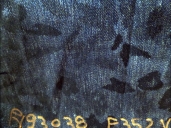












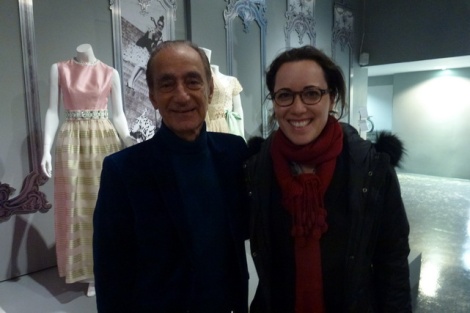














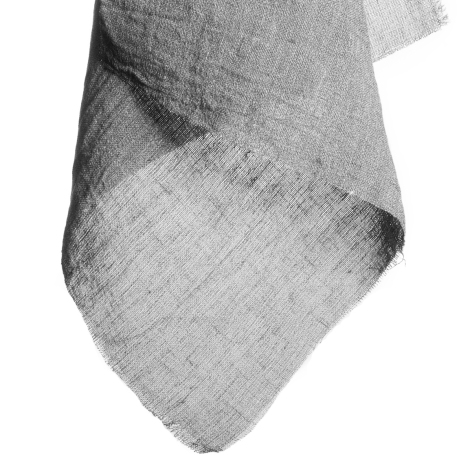






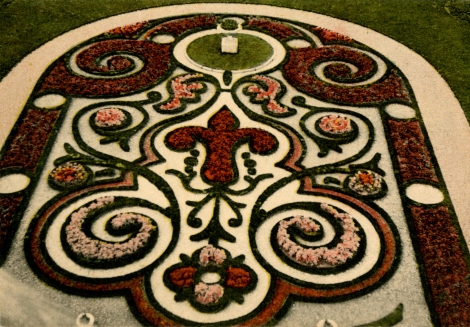






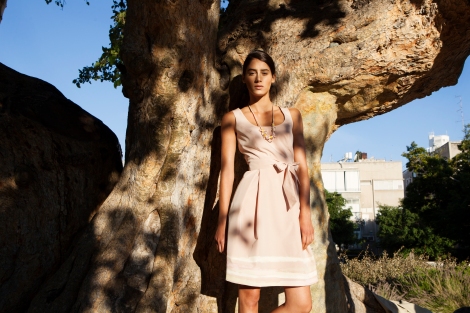
























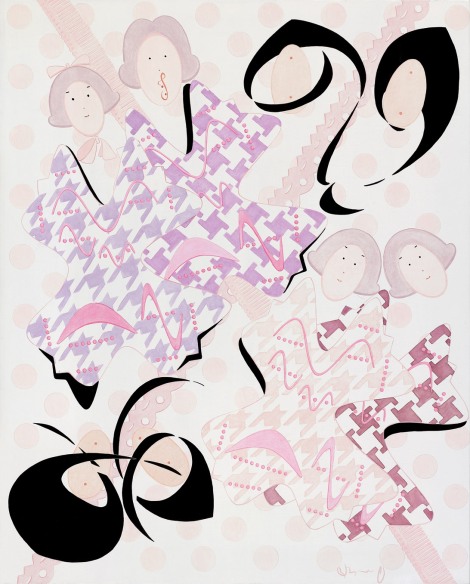

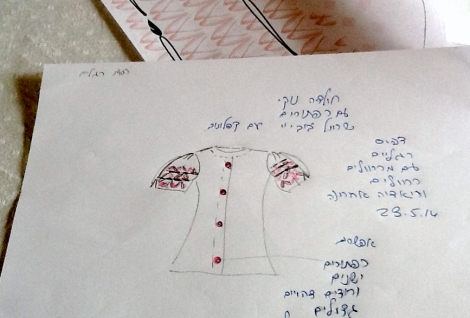

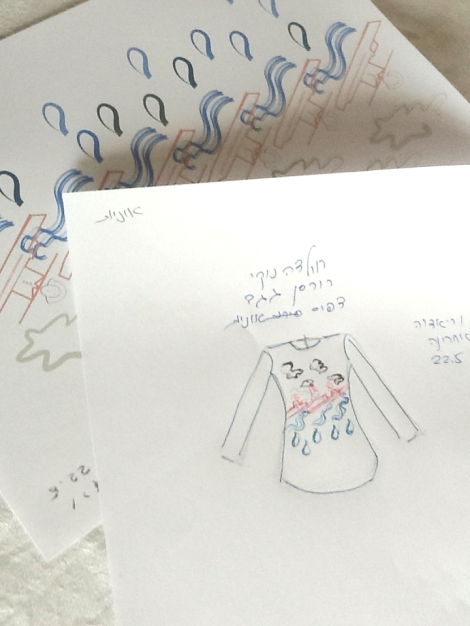







































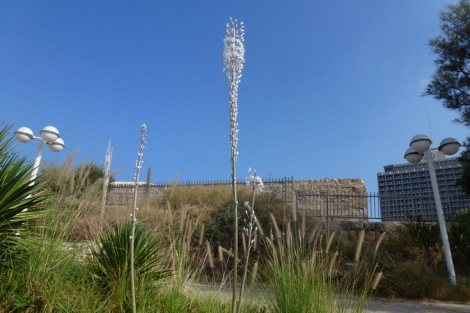

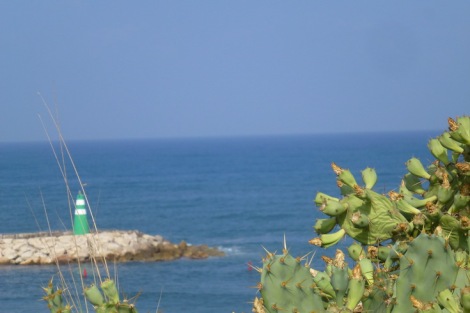


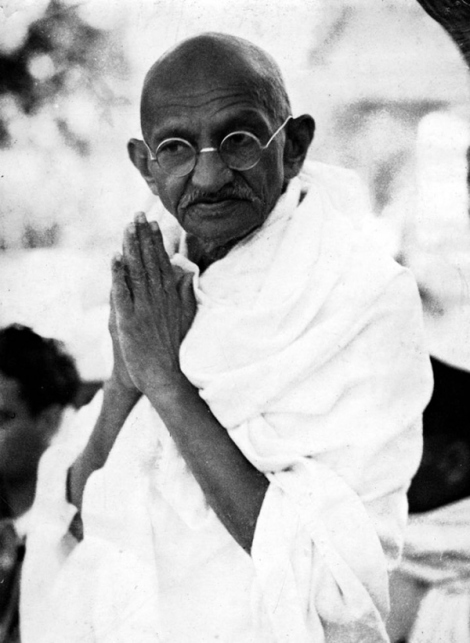

































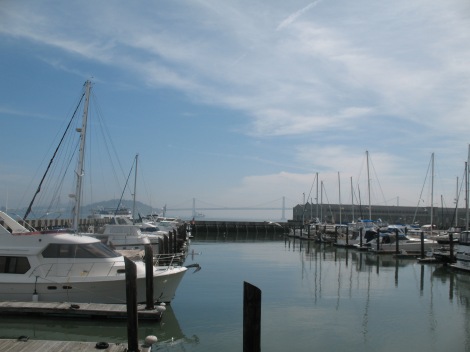










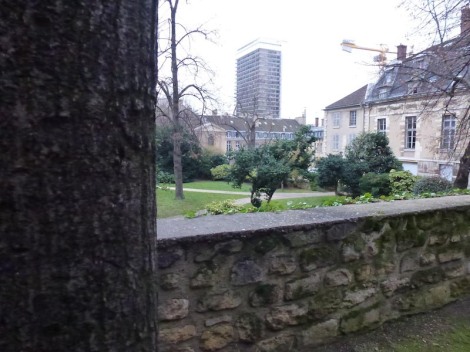
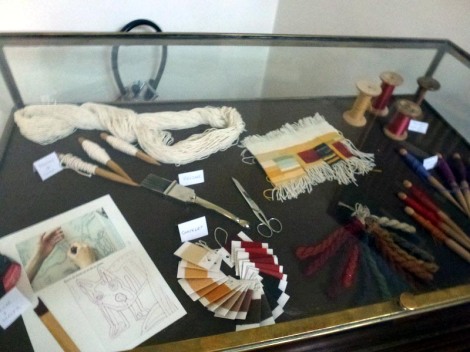
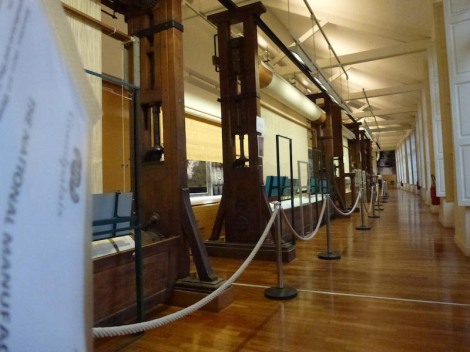
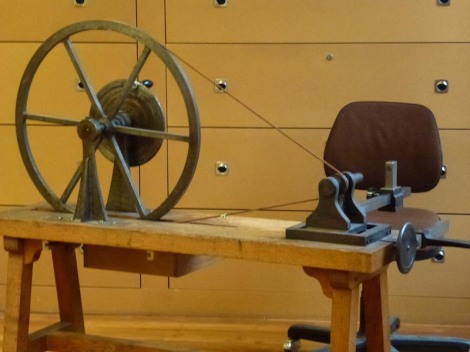

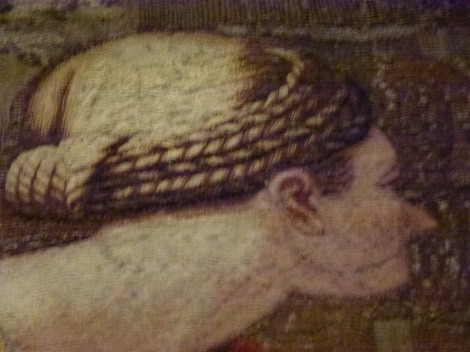
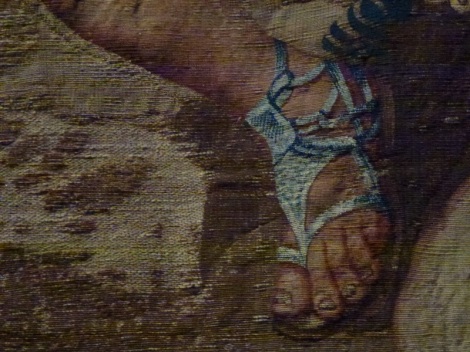
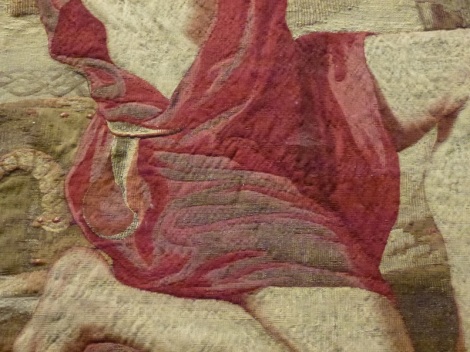
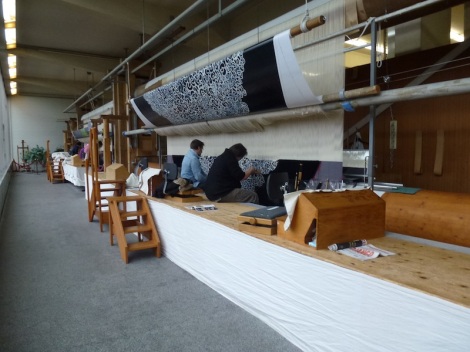
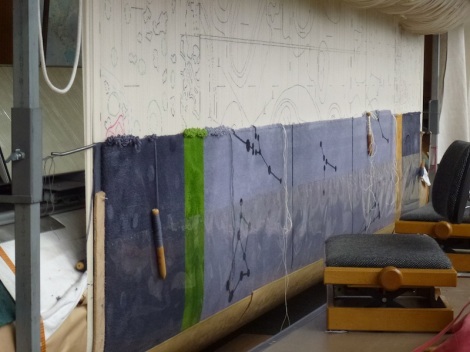
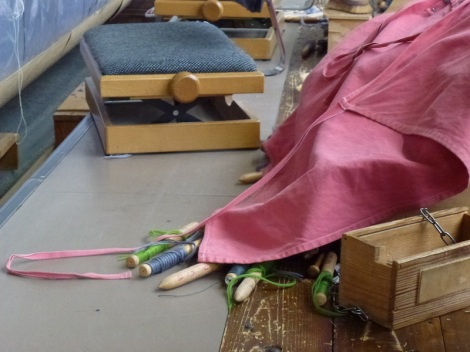

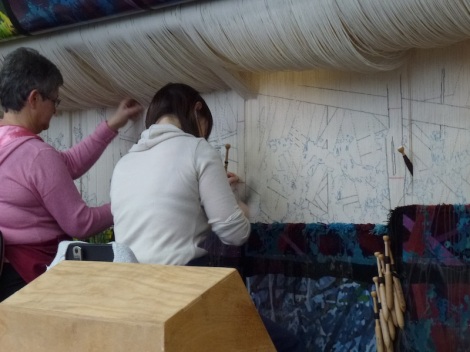
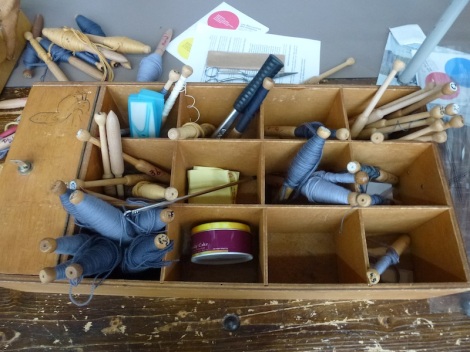
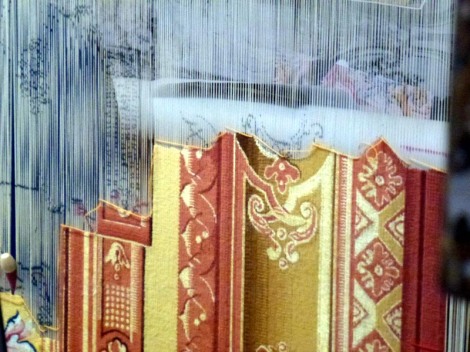
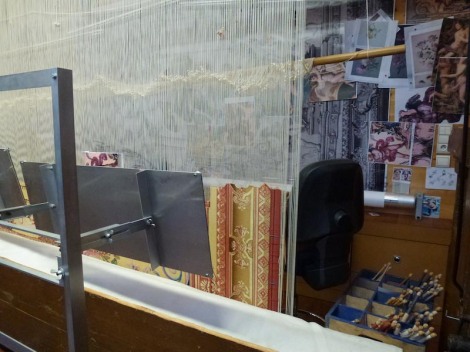
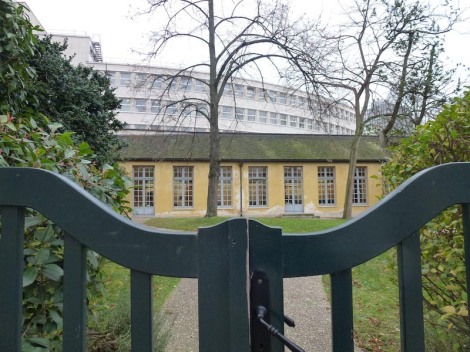

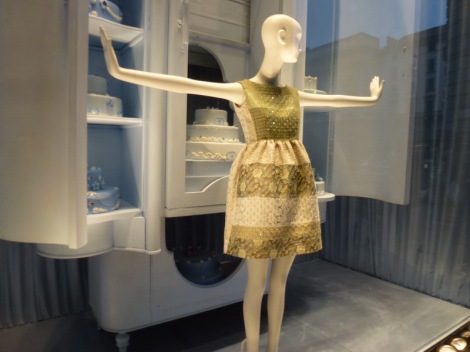






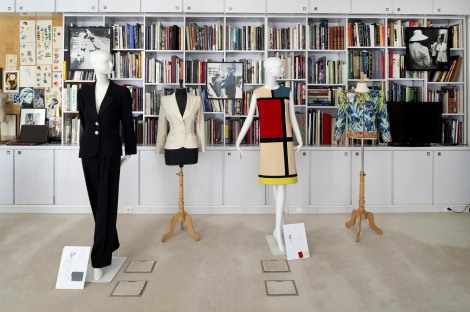
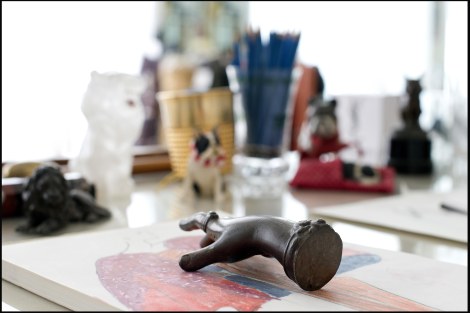




















![IMG_0843[1]](https://masaot.files.wordpress.com/2011/06/img_084311.jpg?w=470)
![IMG_0947[1]](https://masaot.files.wordpress.com/2011/06/img_09471.jpg?w=470)
![IMG_0925[1]_1](https://masaot.files.wordpress.com/2011/06/img_09251_1.jpg?w=470)
![IMG_0995[1]](https://masaot.files.wordpress.com/2011/06/img_09951.jpg?w=470)
![IMG_0997[1]](https://masaot.files.wordpress.com/2011/06/img_09971.jpg?w=470)
![IMG_0980[1]](https://masaot.files.wordpress.com/2011/06/img_098011.jpg?w=470)




























































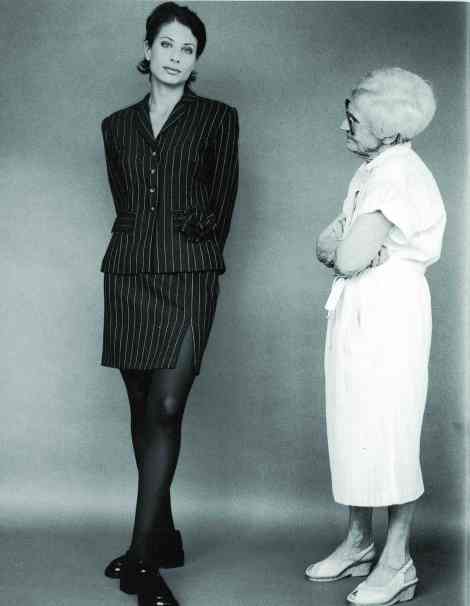
פינגבק: Nostalgia Sunday – ATA for all | ISRAELITY·
פינגבק: When Fashion Designer are more than creative…tales from Tel Aviv « SNOWDROP'S GARDEN·
פינגבק: A weaved journey | THE VIEW FROM MORMOR'S SEWING ROOM·